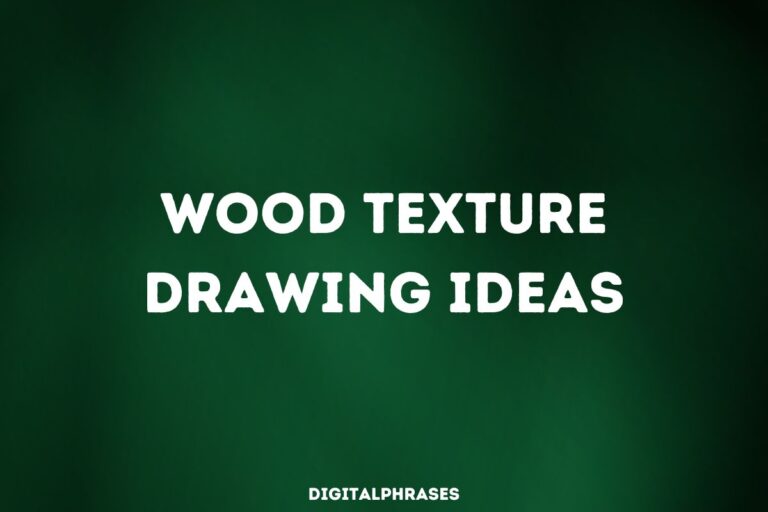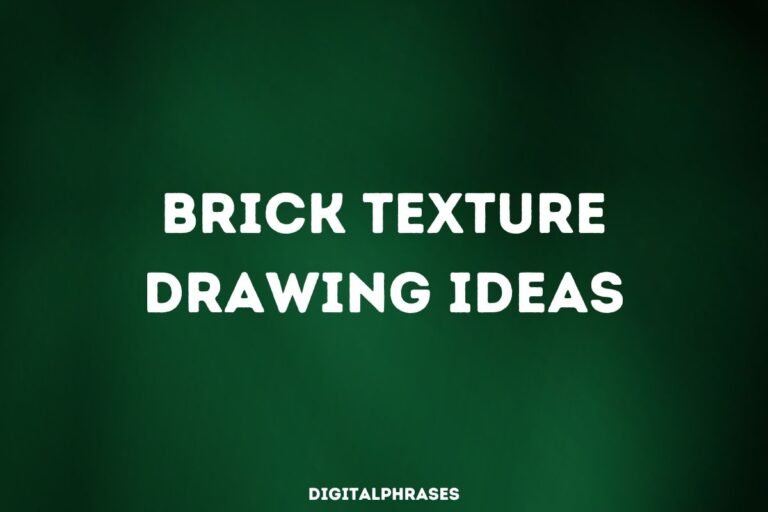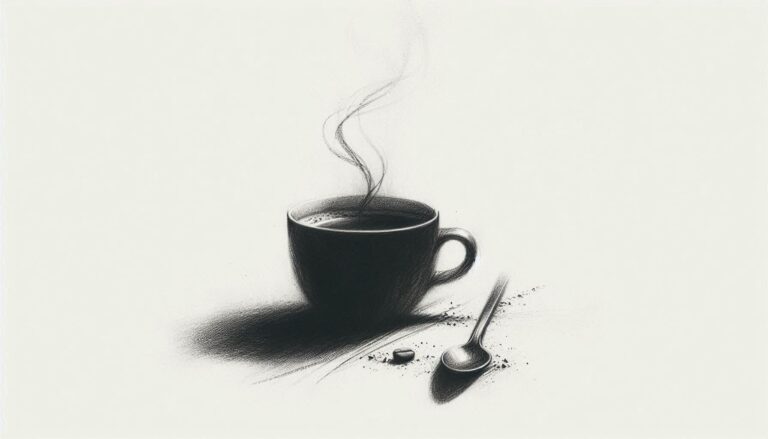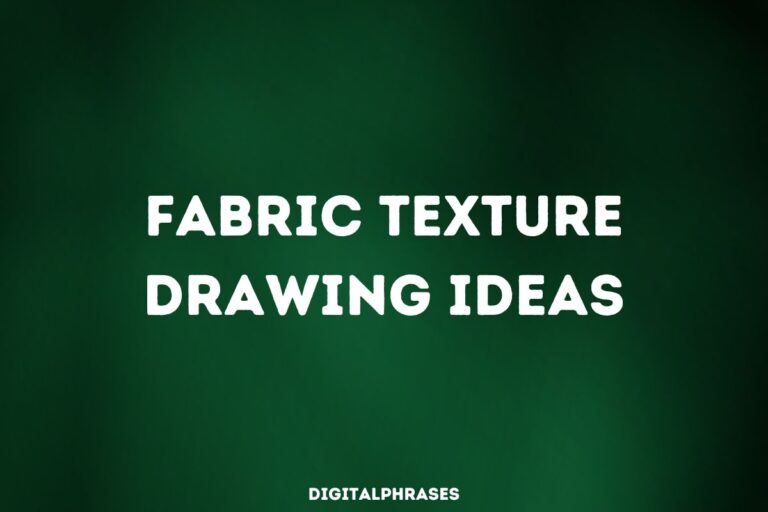72 Black Cat Drawing Ideas
Imagine finding yourself in a cozy, dimly lit room, where a sleek black cat quietly prowls around the furniture, its eyes glinting with a mysterious allure.
As you watch, you can’t help but feel drawn to capture this scene, the contrast between the cat’s dark silhouette and the soft shadows around it sparking your artistic imagination.
Drawing them opens up a world of creative possibilities, from capturing its graceful movements to illustrating its playful curiosity.
Picture the cat lounging in a sunbeam, its fur shimmering with highlights, or imagine it perched on a windowsill, gazing thoughtfully at the world outside.
Each scenario presents an opportunity to explore different techniques and styles, allowing you to bring the cat’s personality and mystique to life.
Whether you’re inspired by the real-life antics of a feline friend or the enchanting tales of magical black cats, these drawing ideas will help you explore them further.
Let’s check them out.
Halloween Themed Black Cats
1

2

3
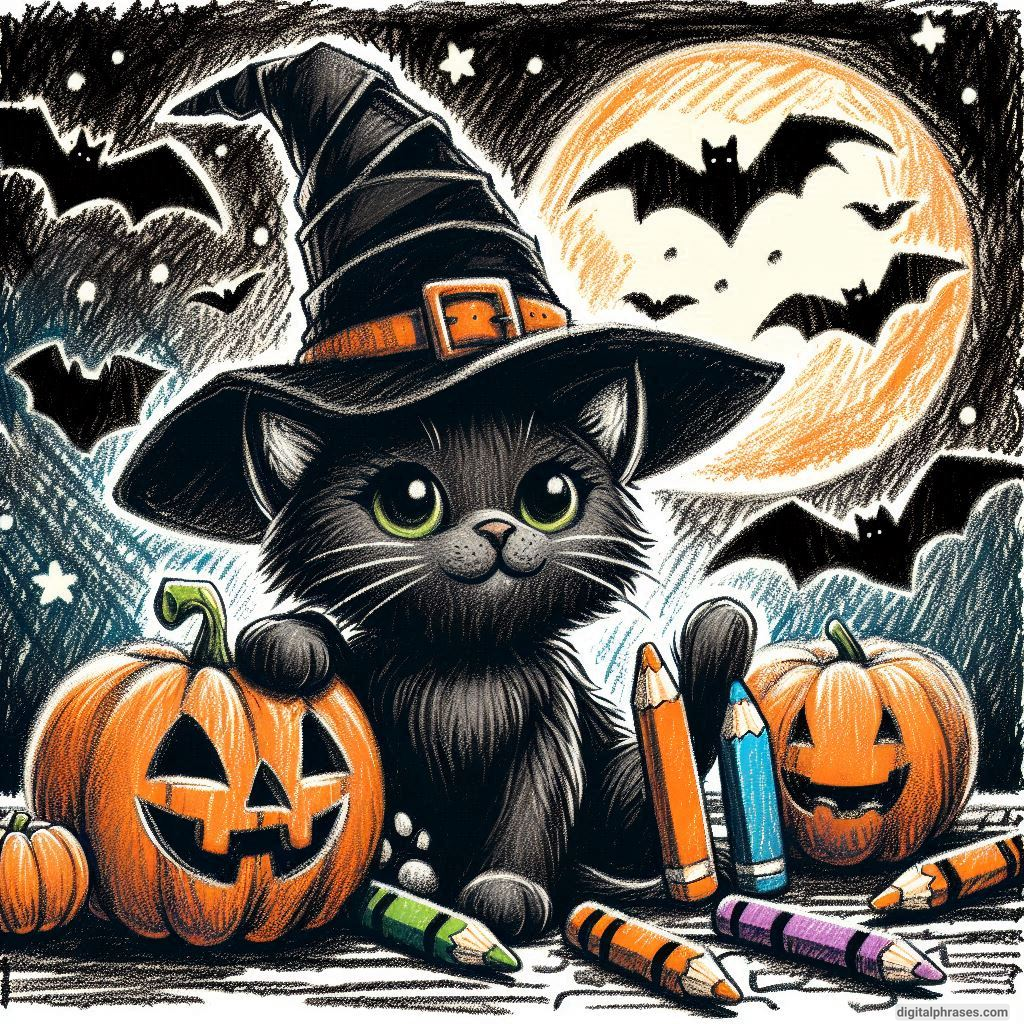
4

5

6
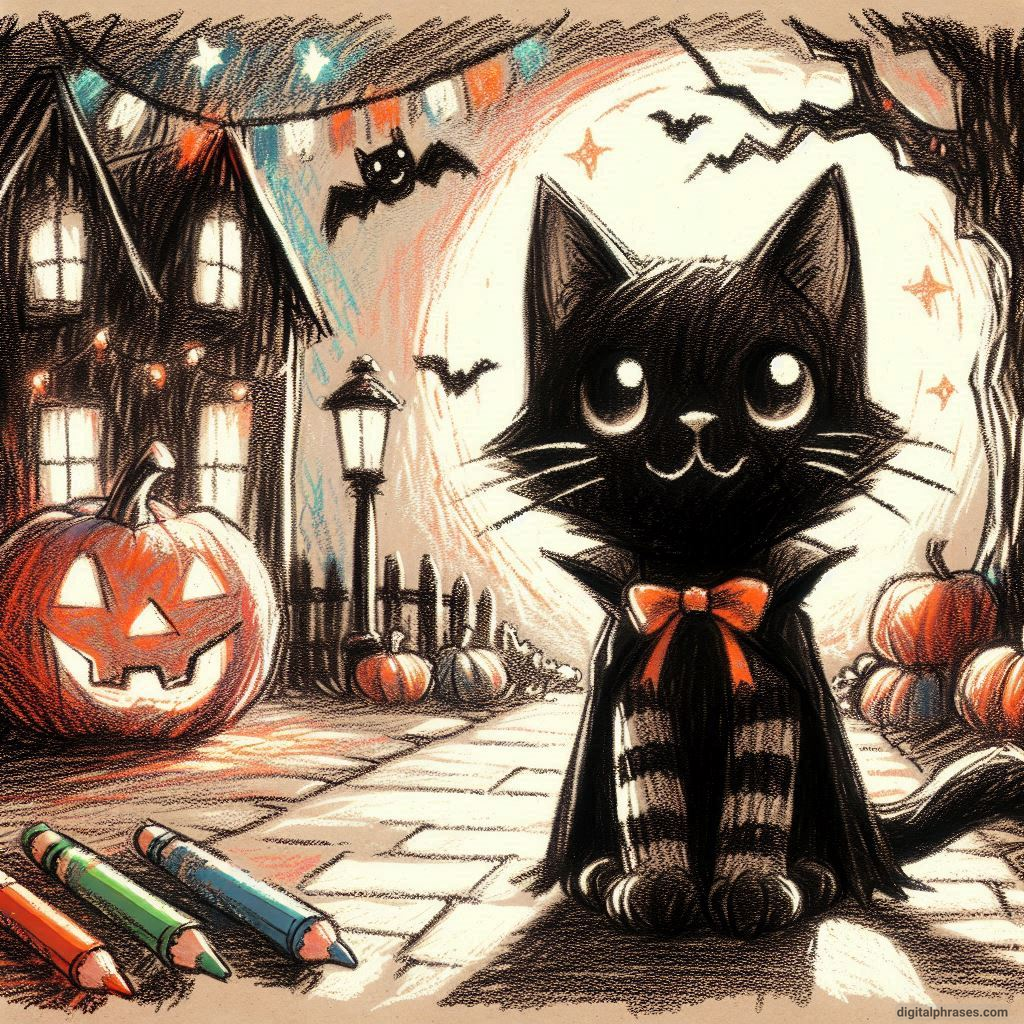
Mystical Black Cat
1
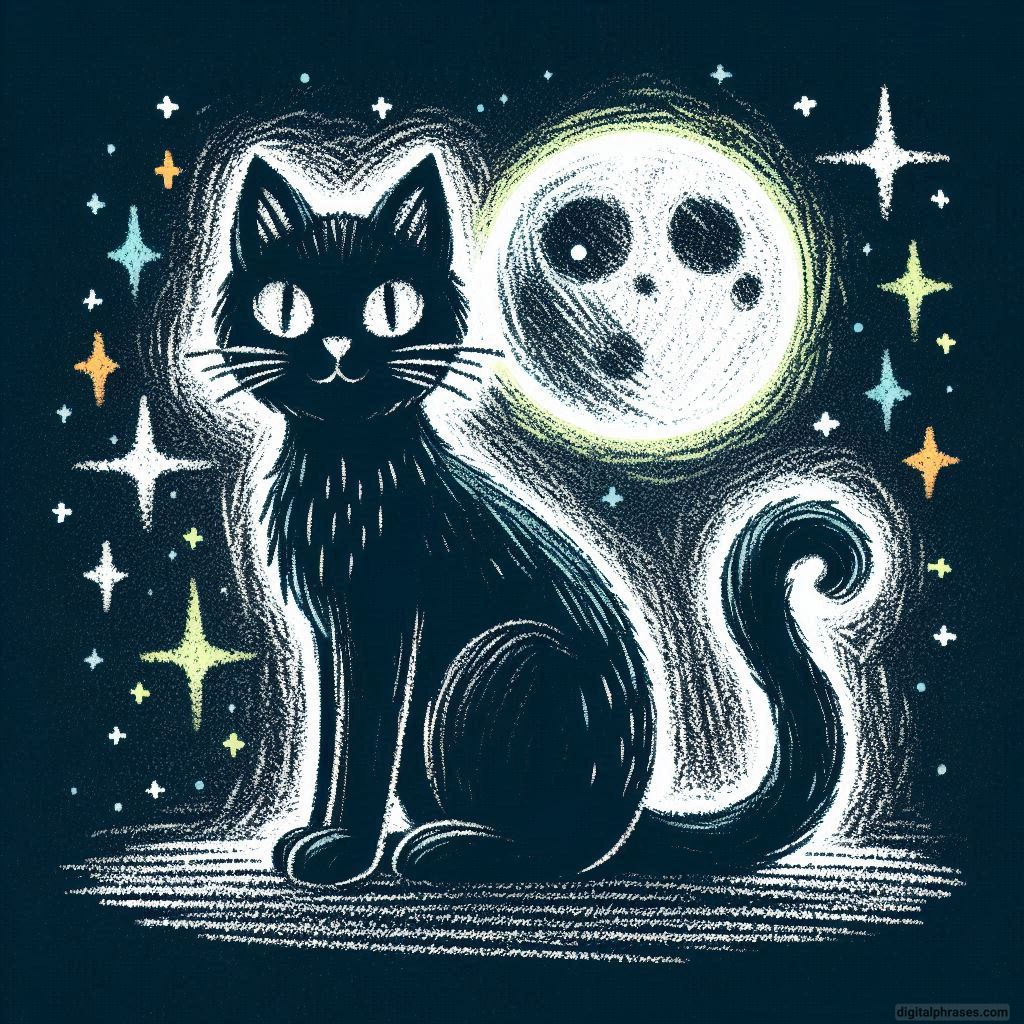
2
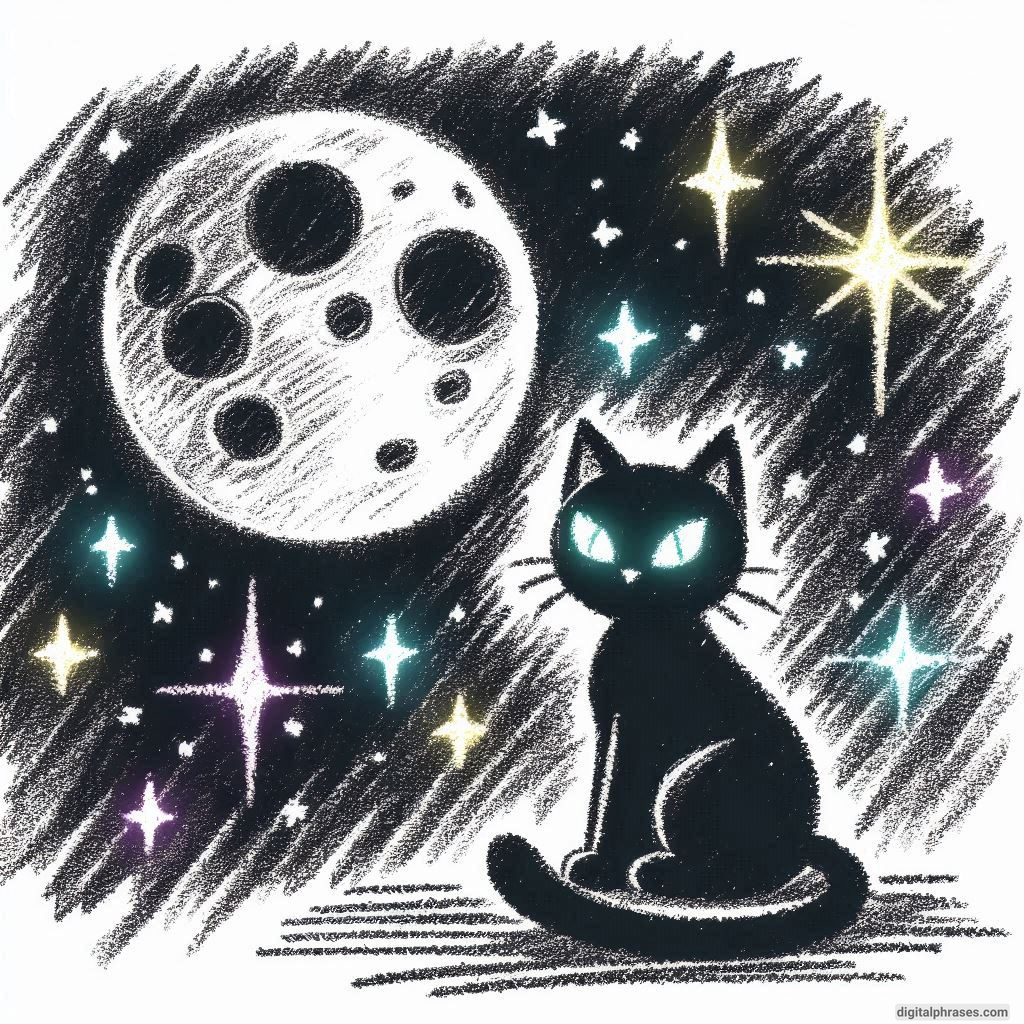
3

4

5
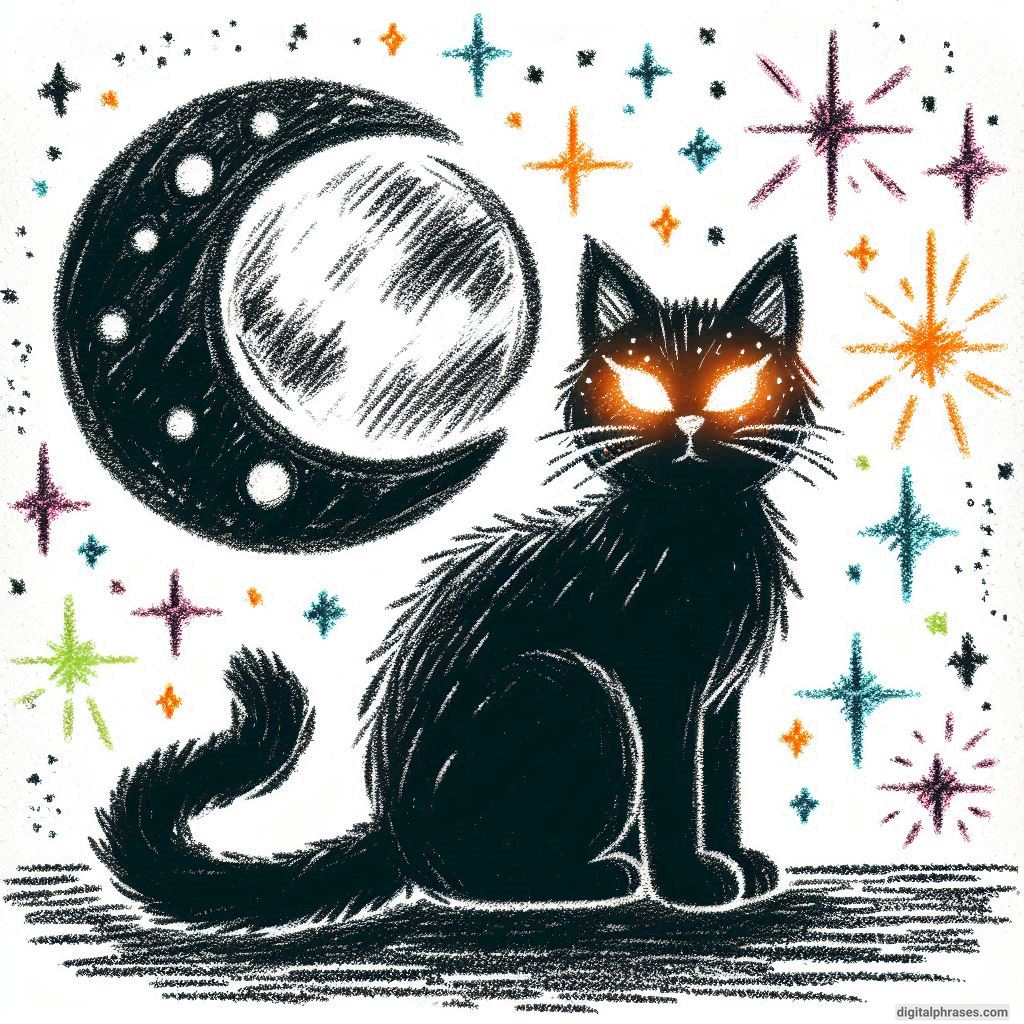
6

Playful Kittens
1

2

3
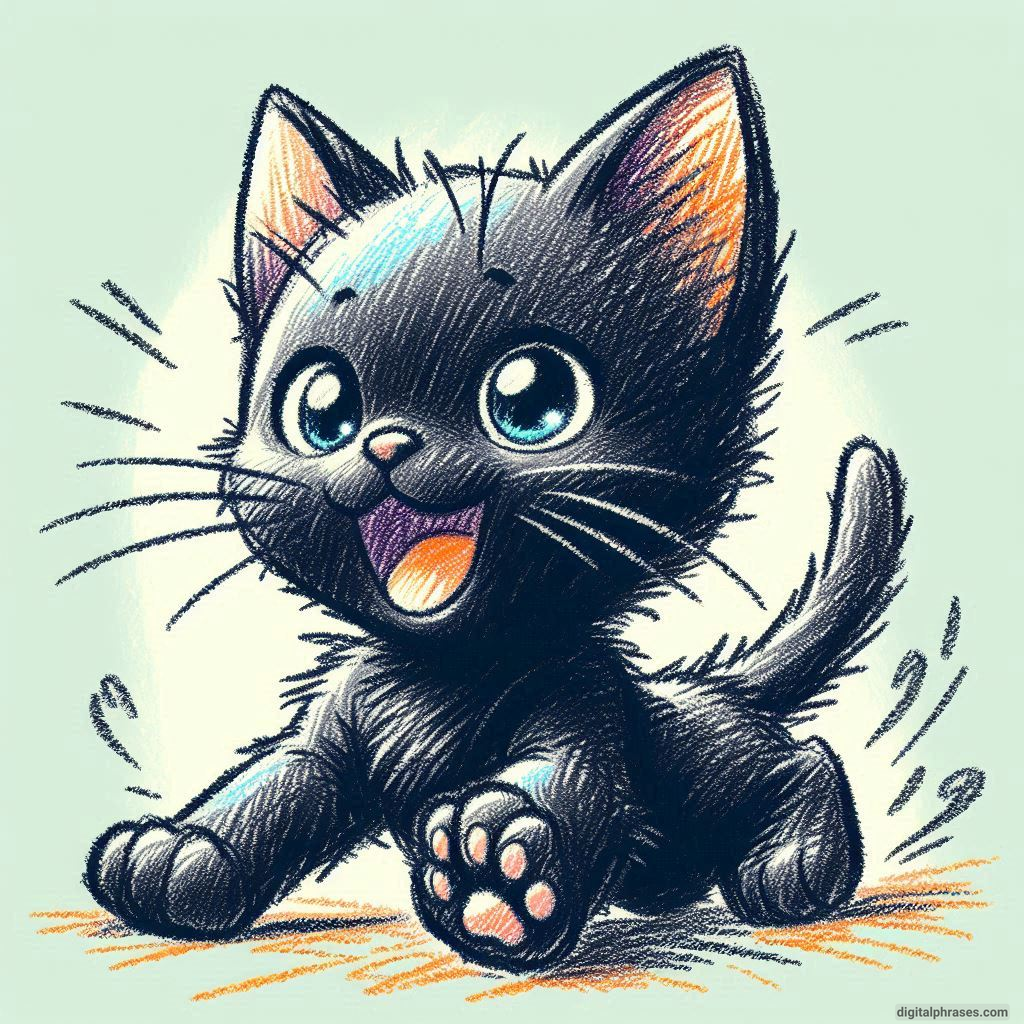
4
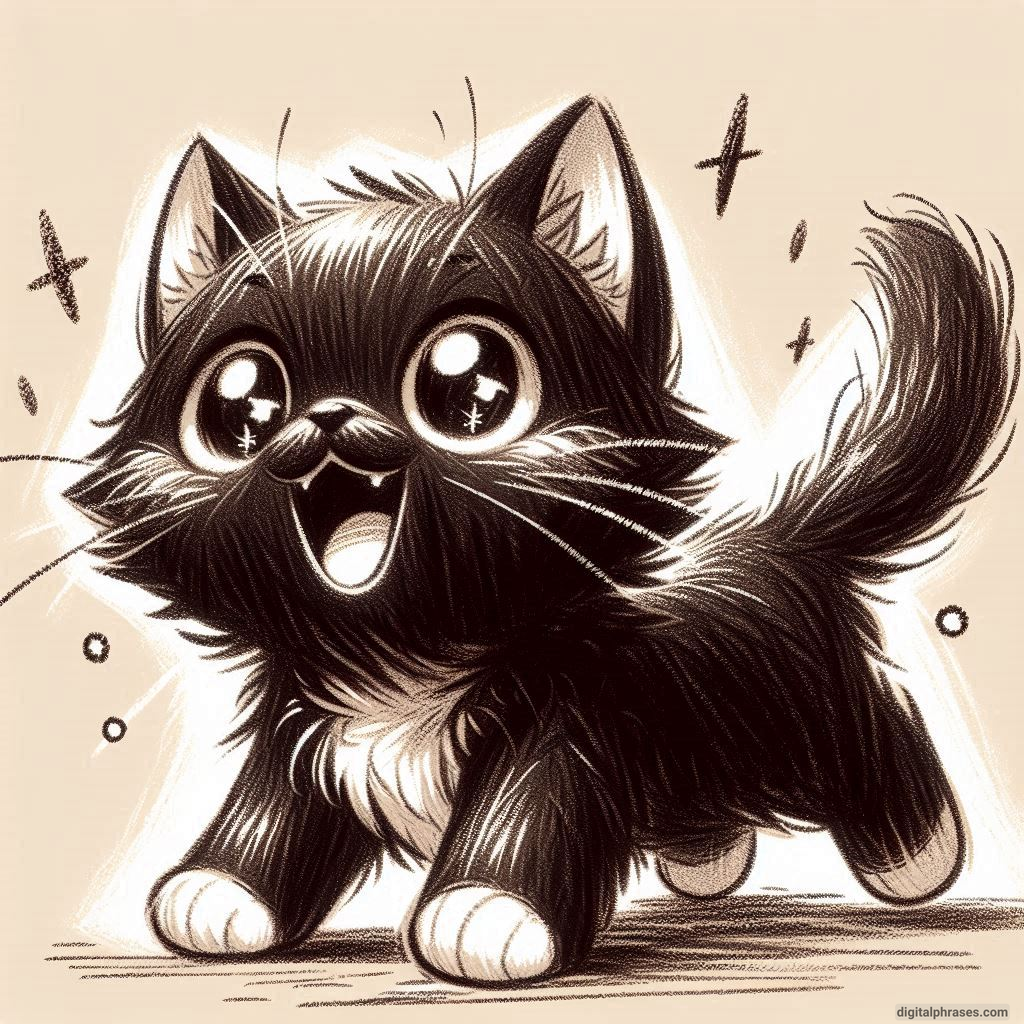
5
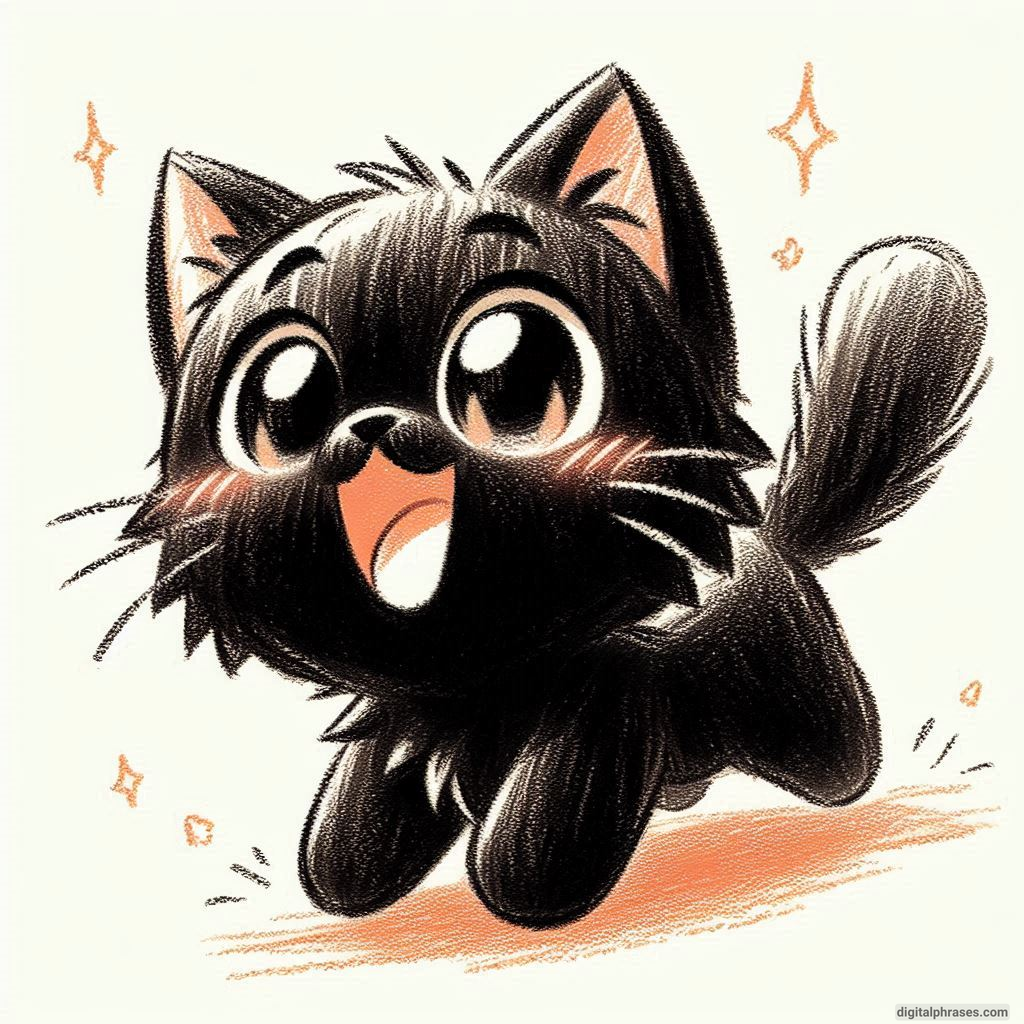
6

Silhouette Style Black Cats
1

2

3

4

5
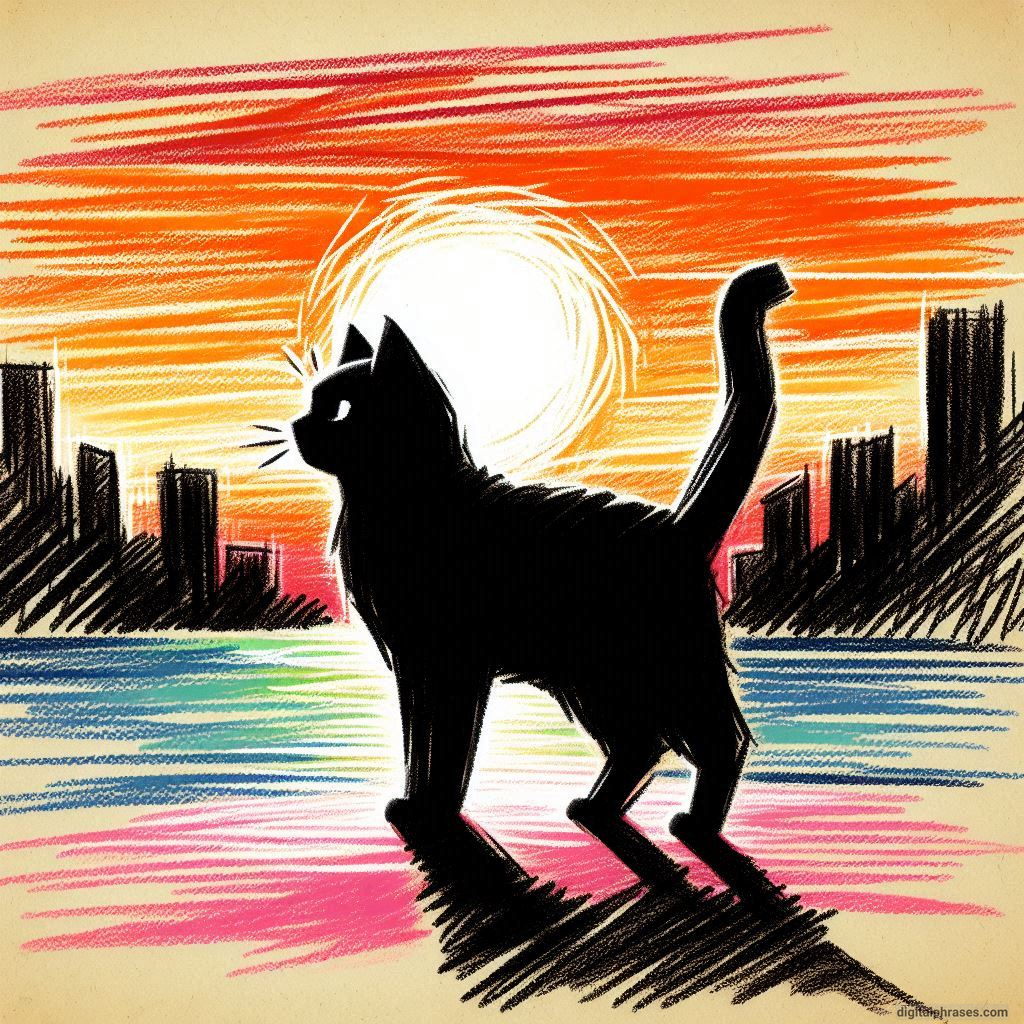
6
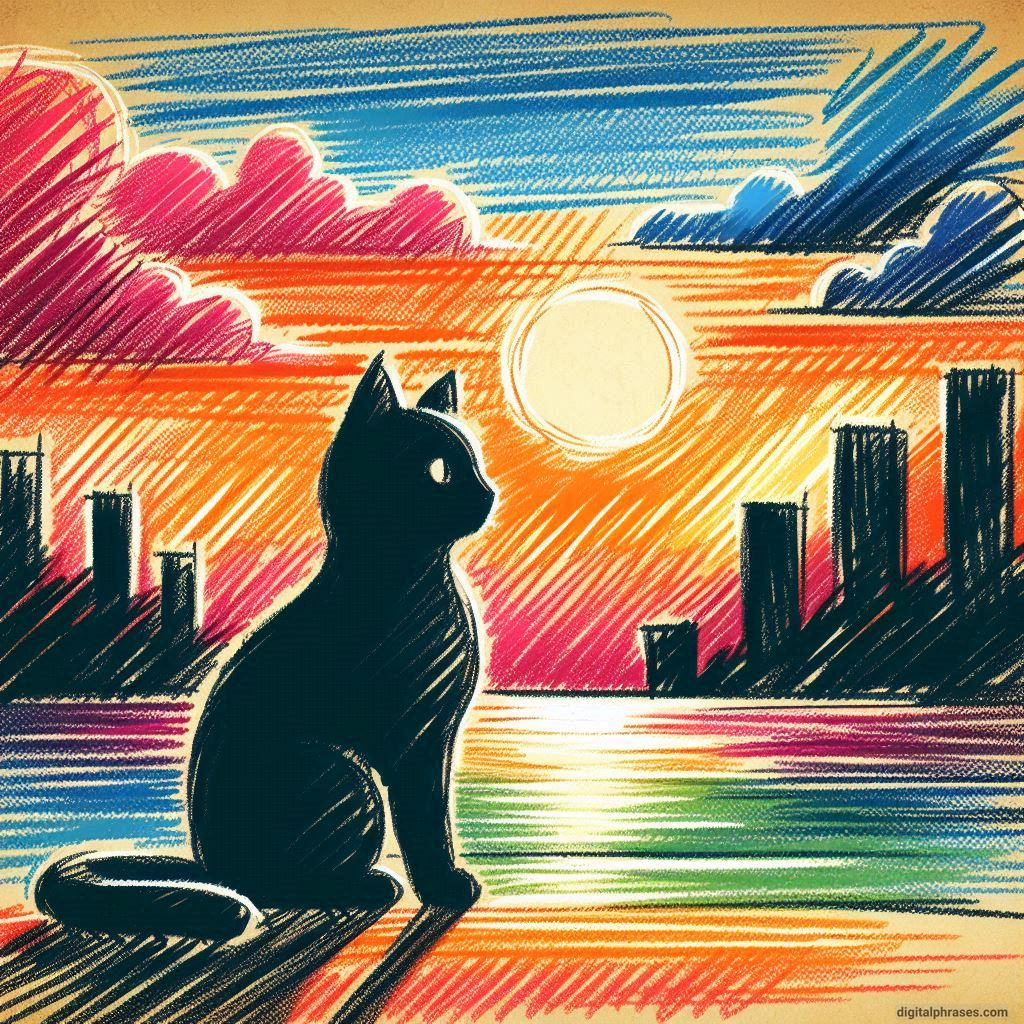
Cuddly Black Cats
1
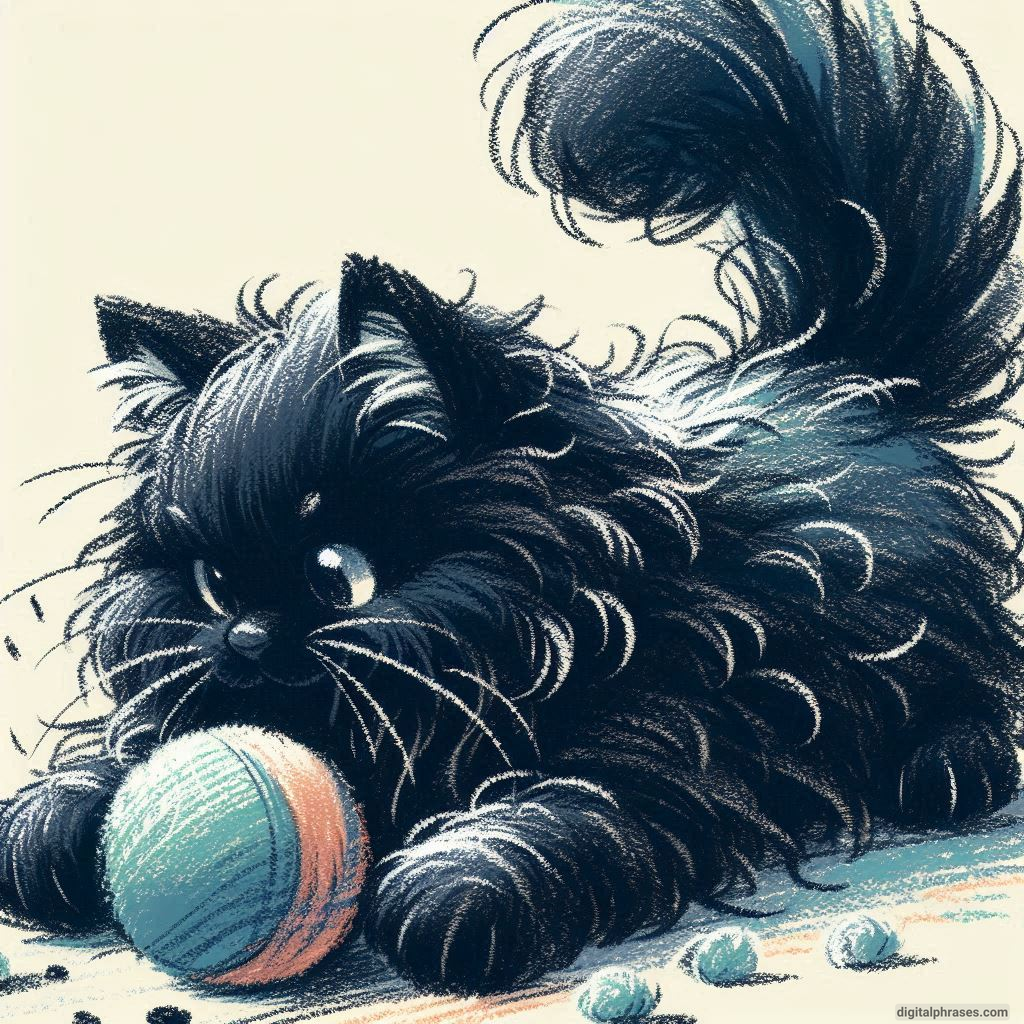
2
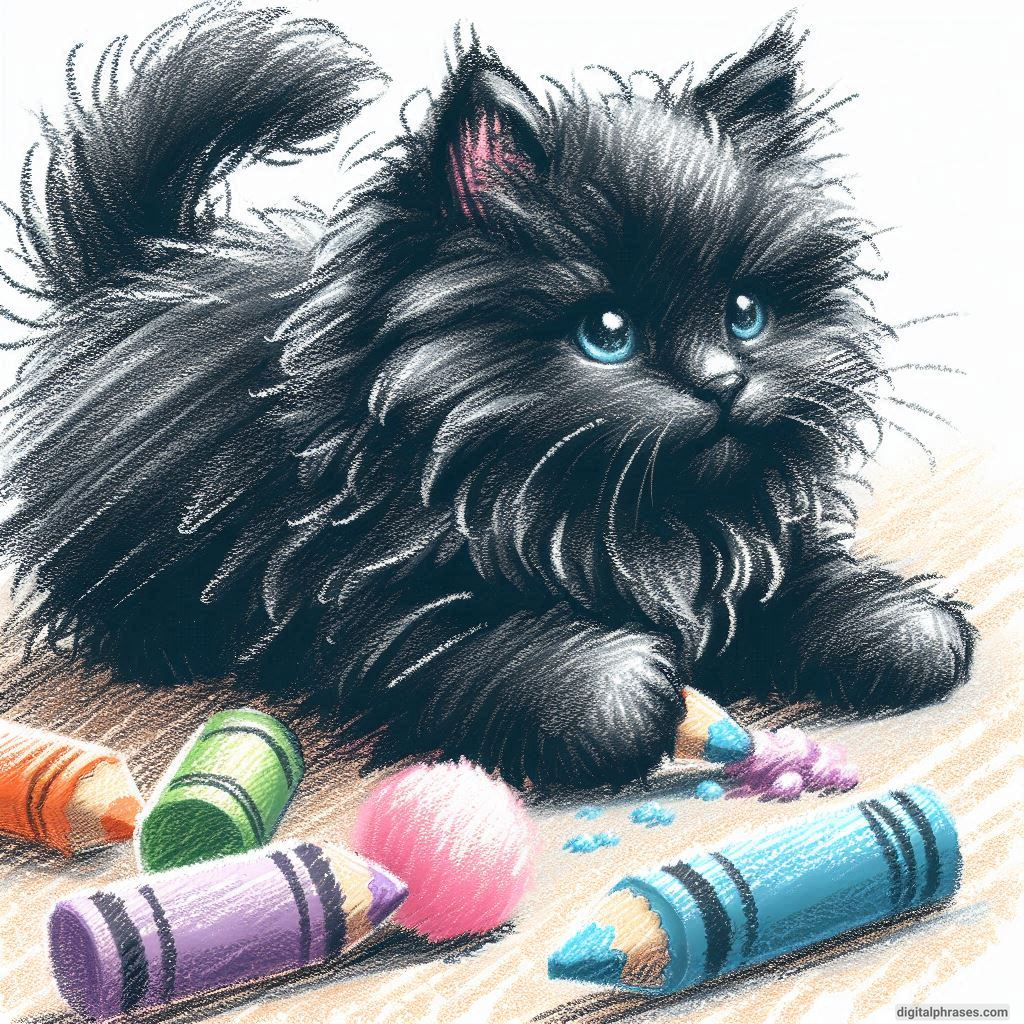
3
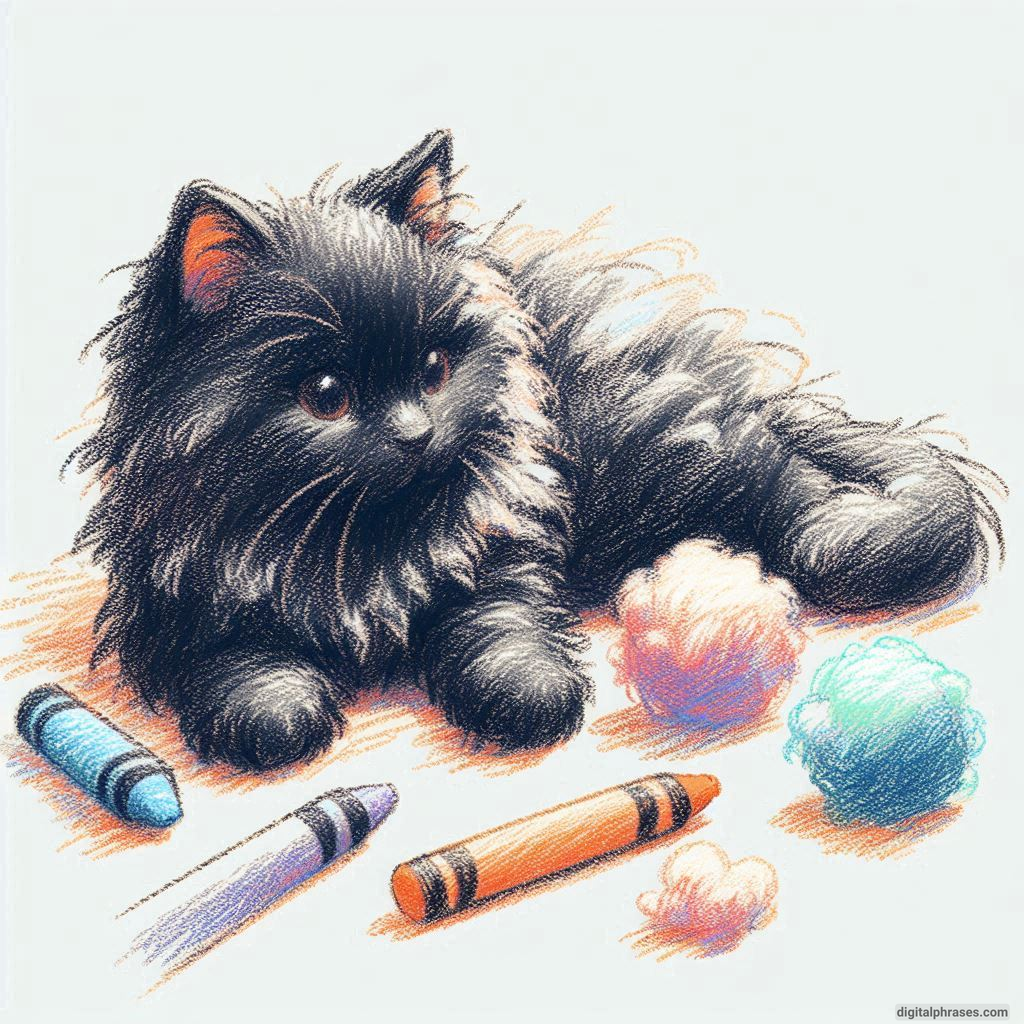
4
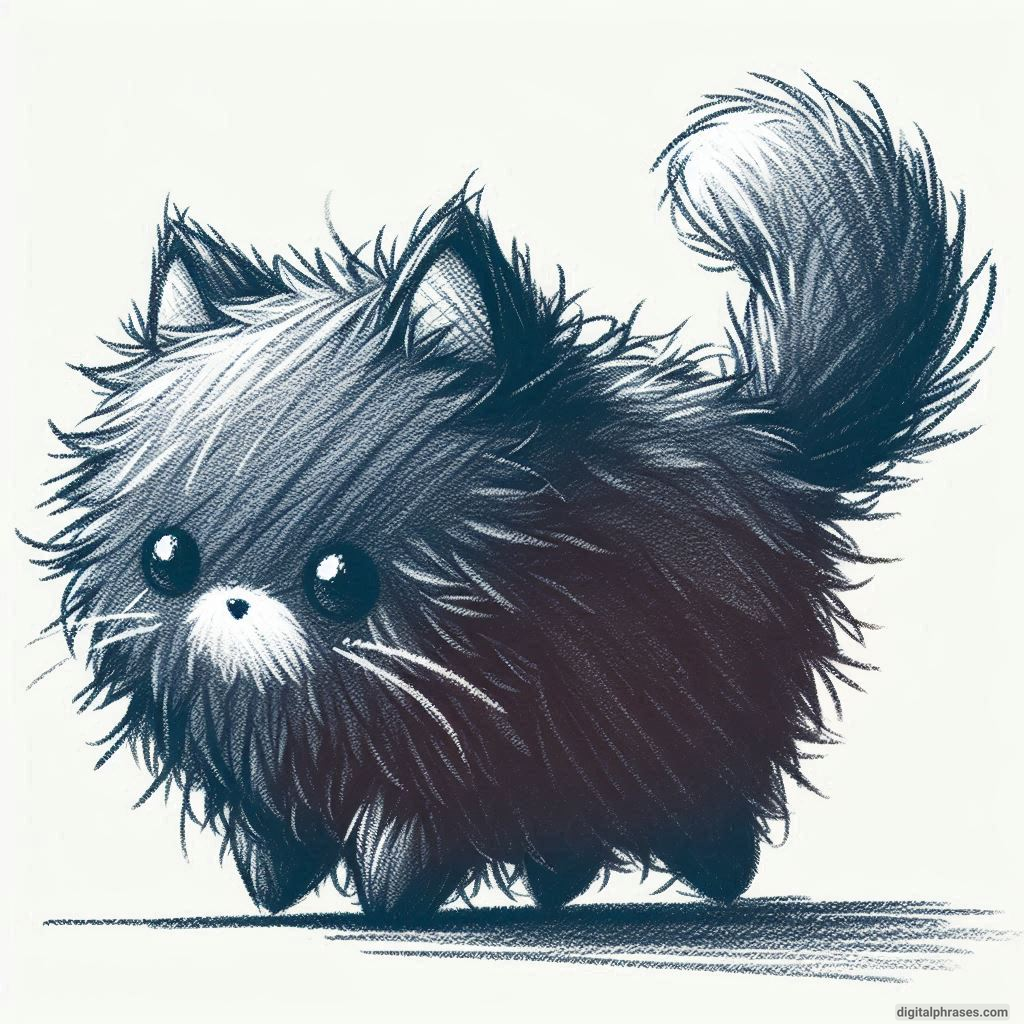
5
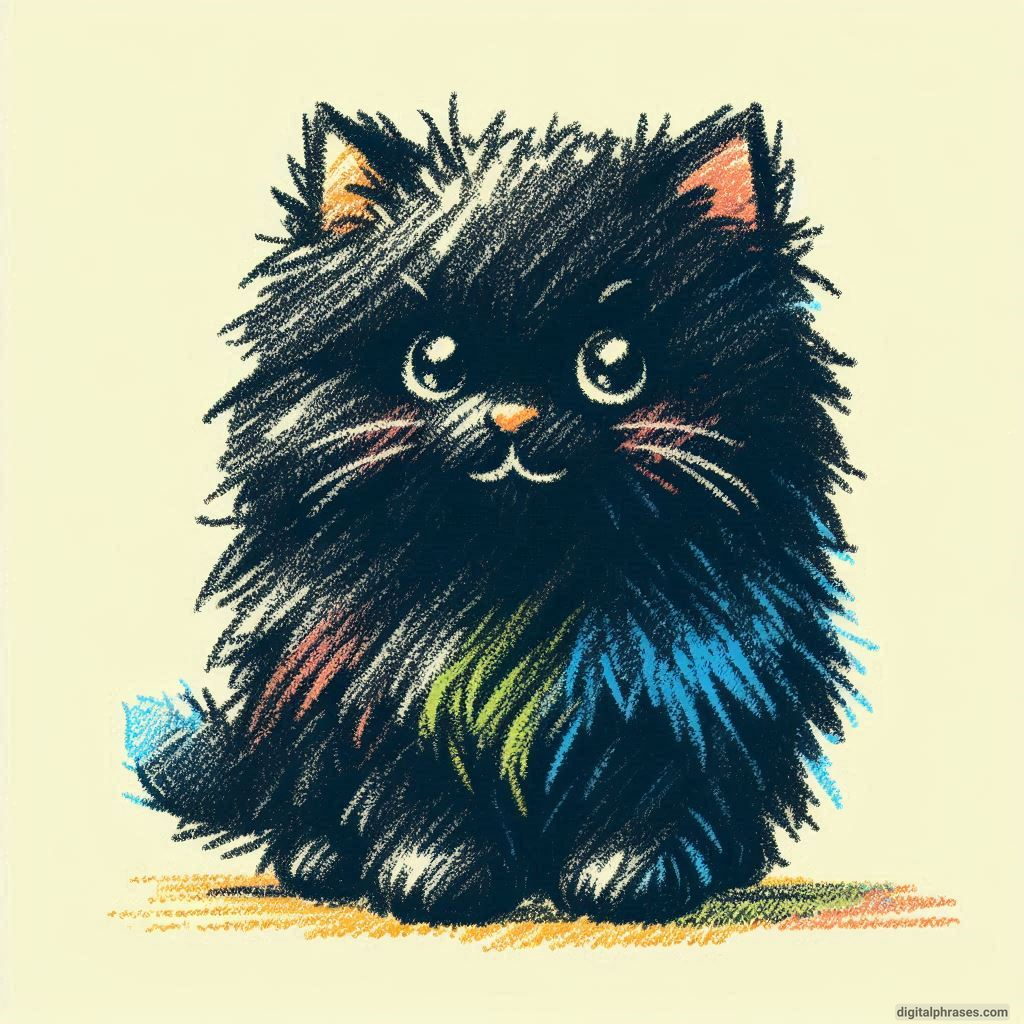
6
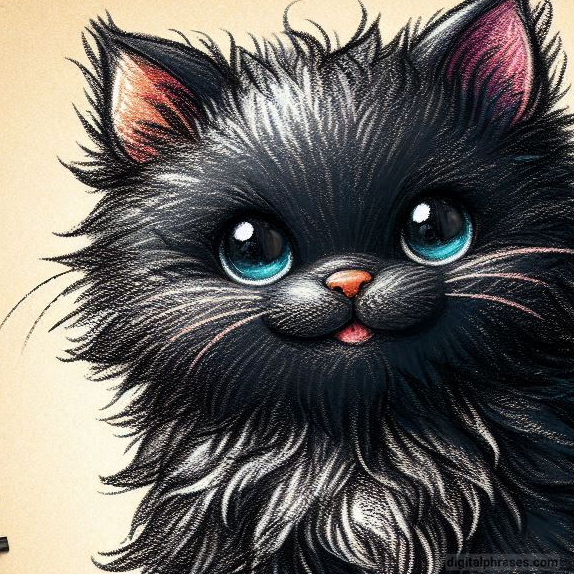
Cats with Flowers
1

2

3

4
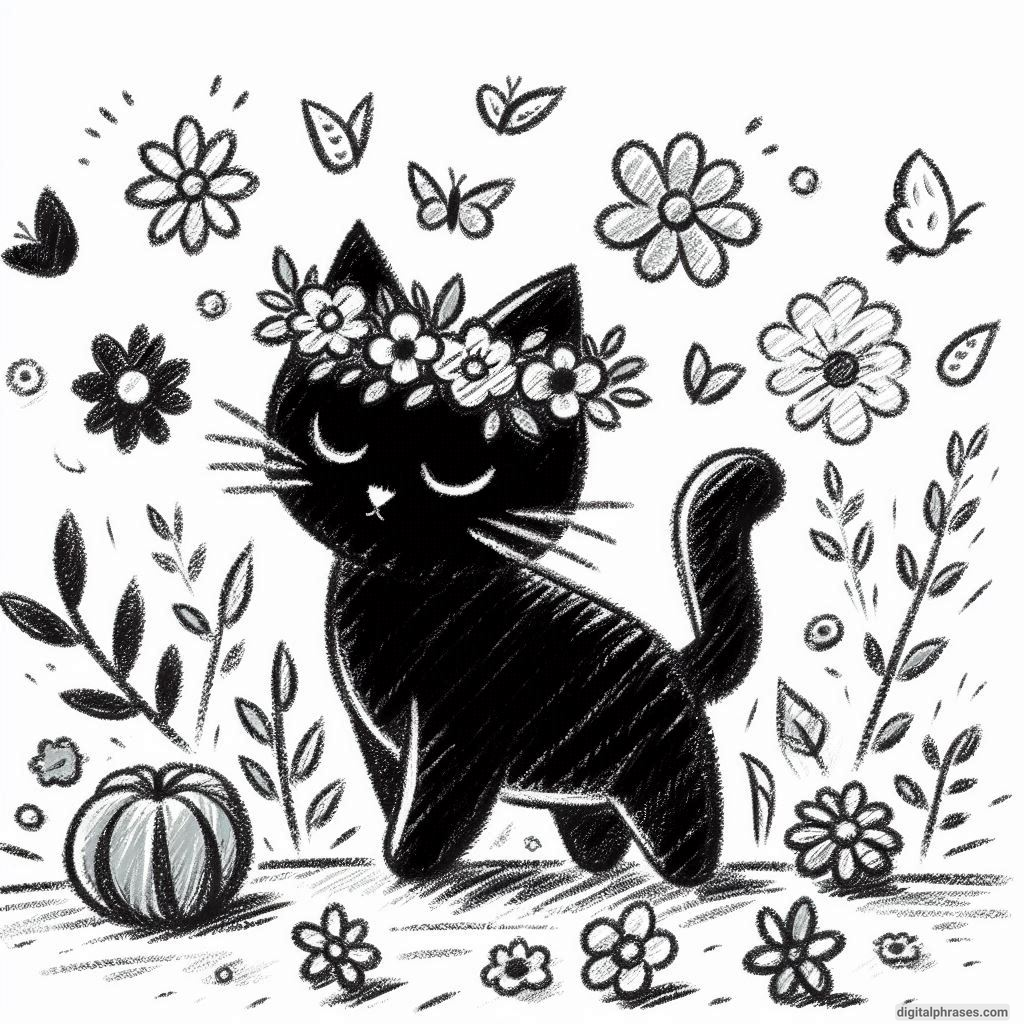
5

6

Black Cats along with Butterflies
1

2
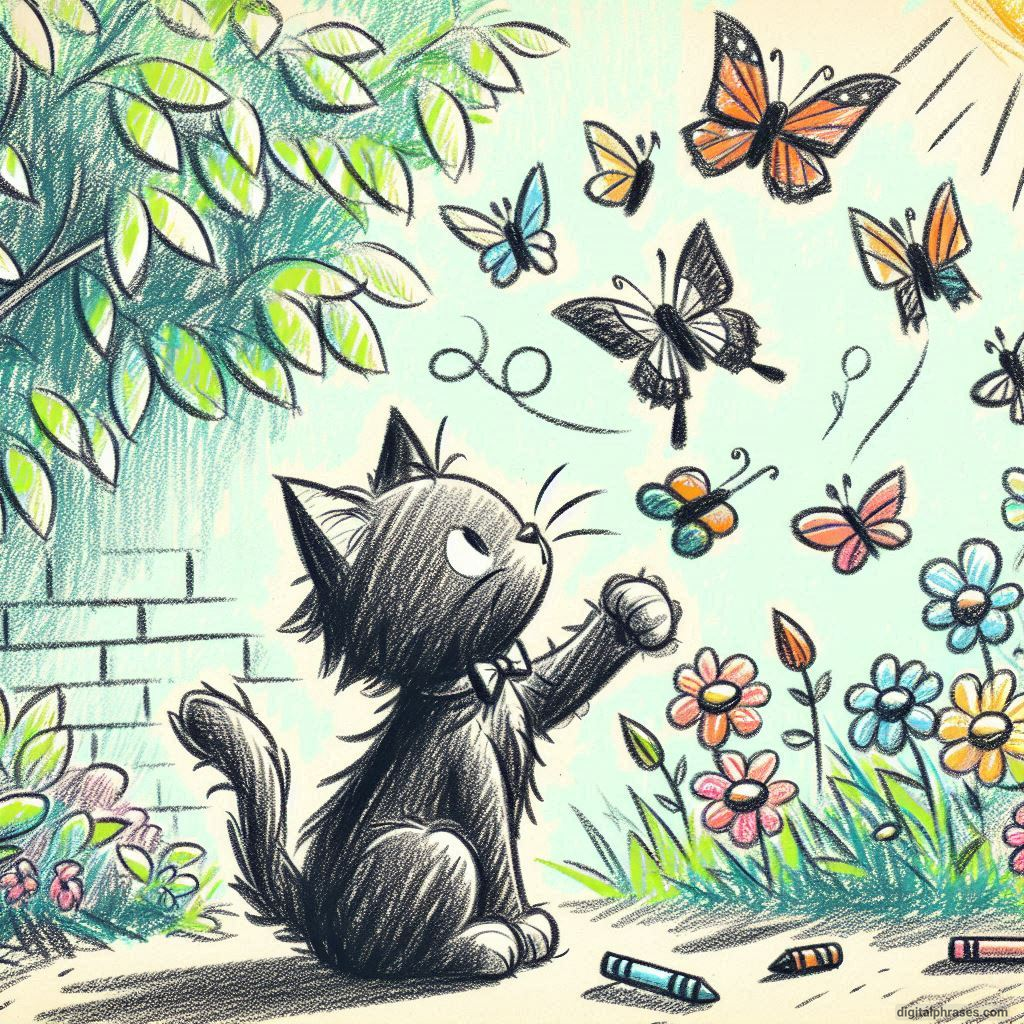
3

4

5

6

Abstract Cats
1
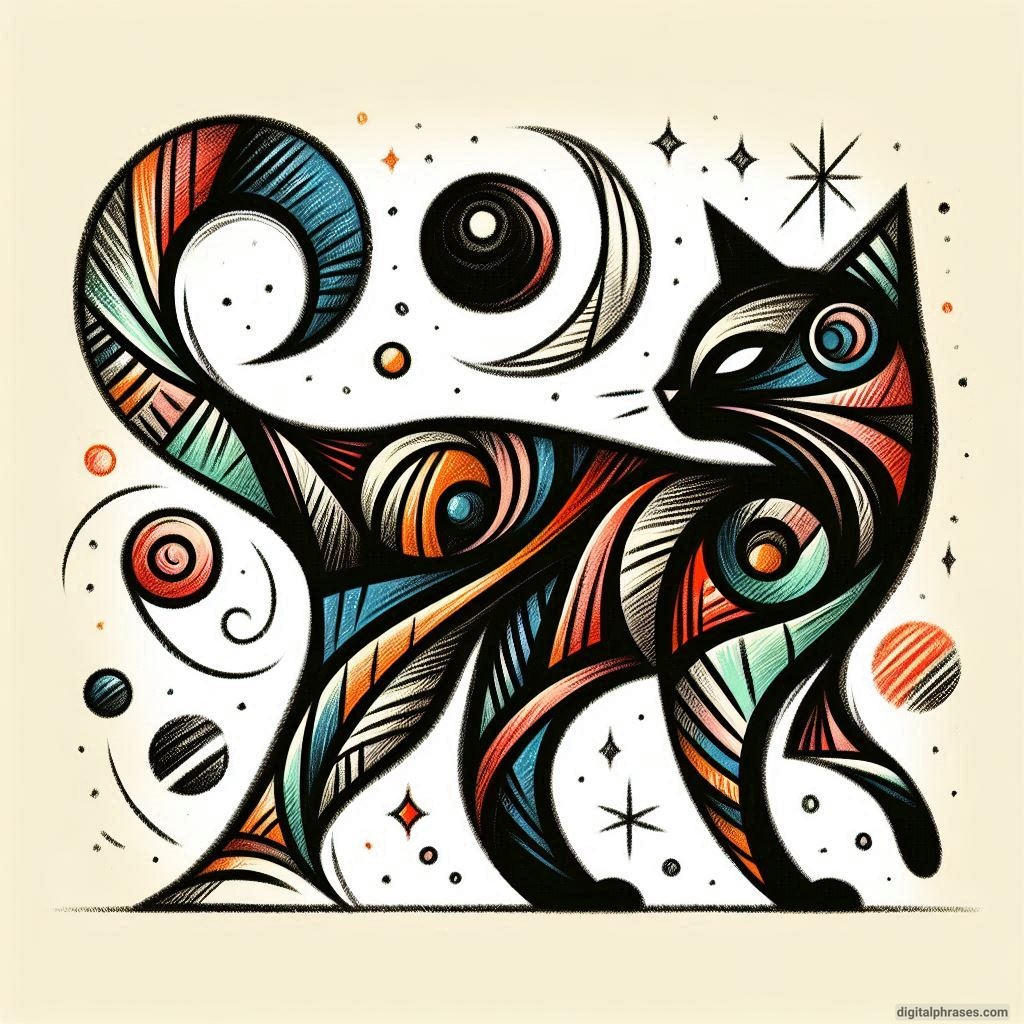
2
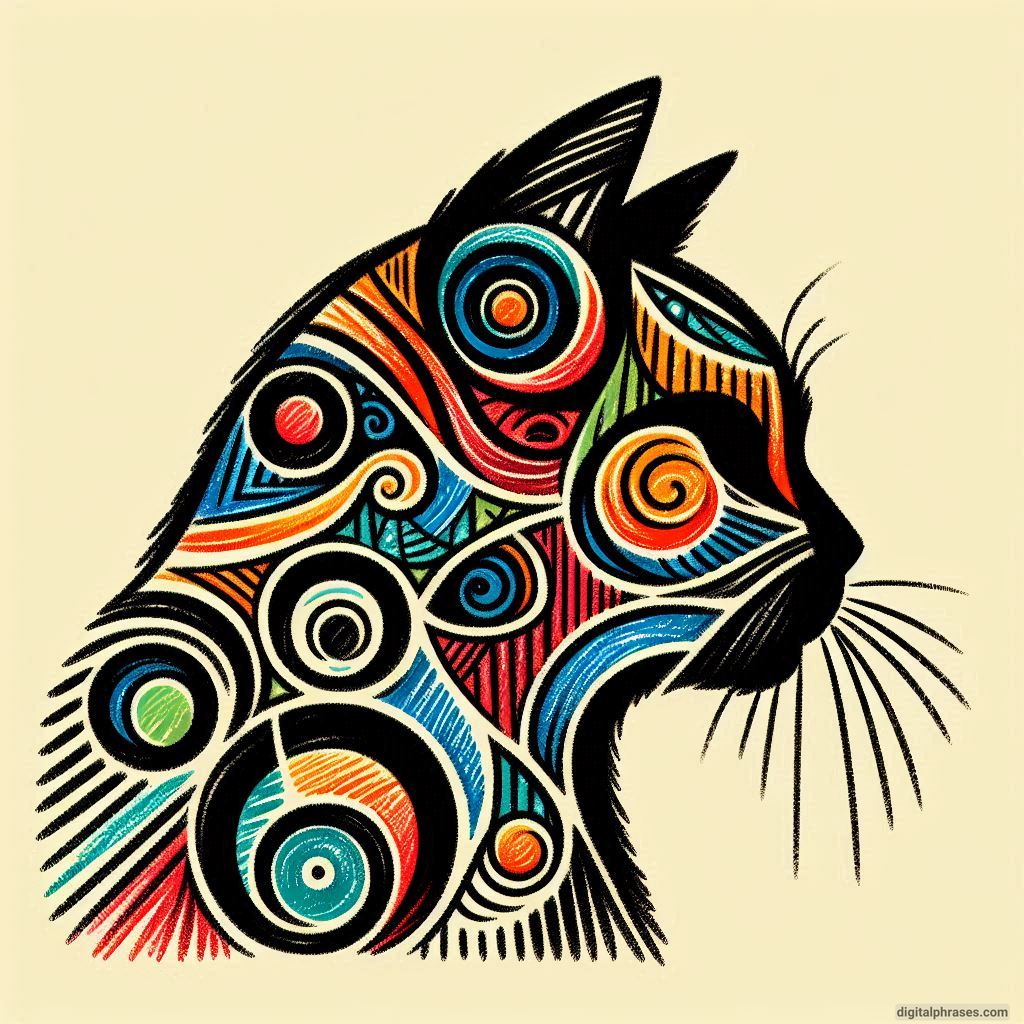
3
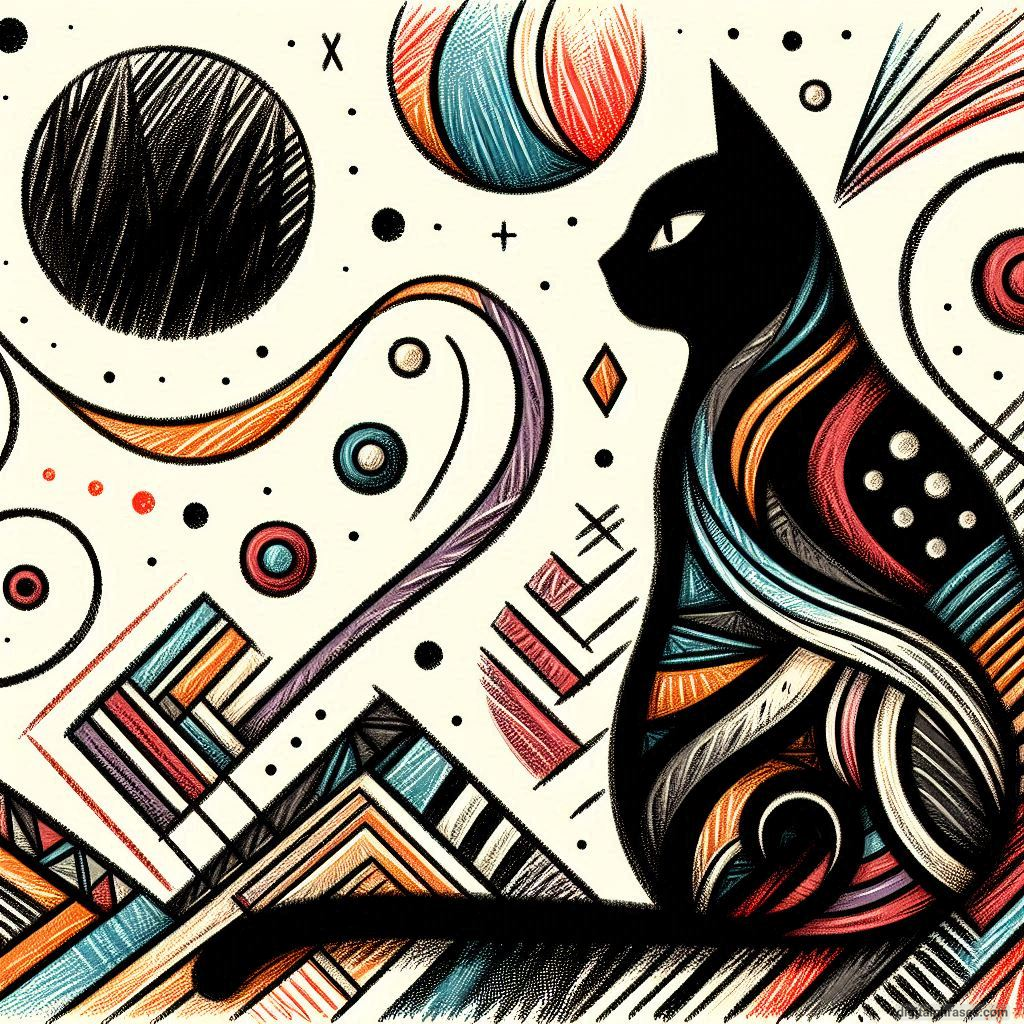
4
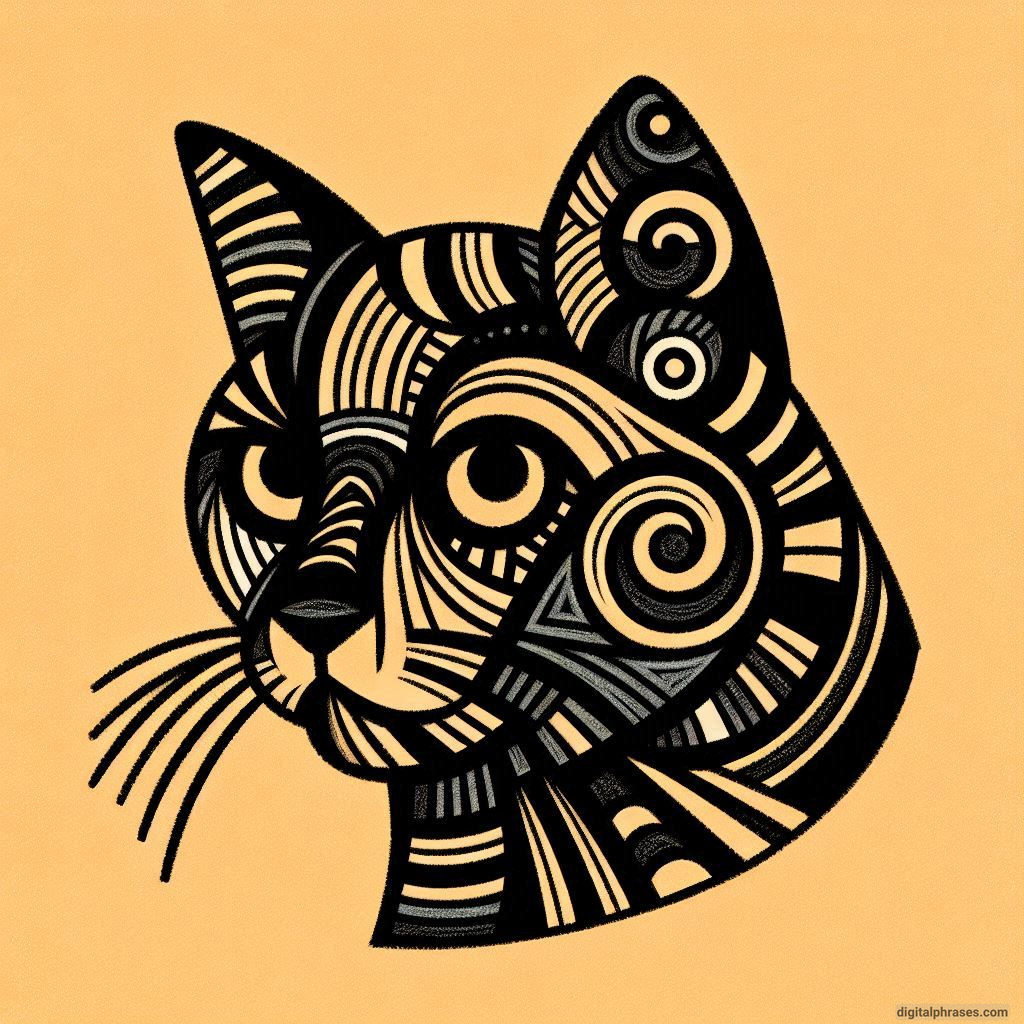
5
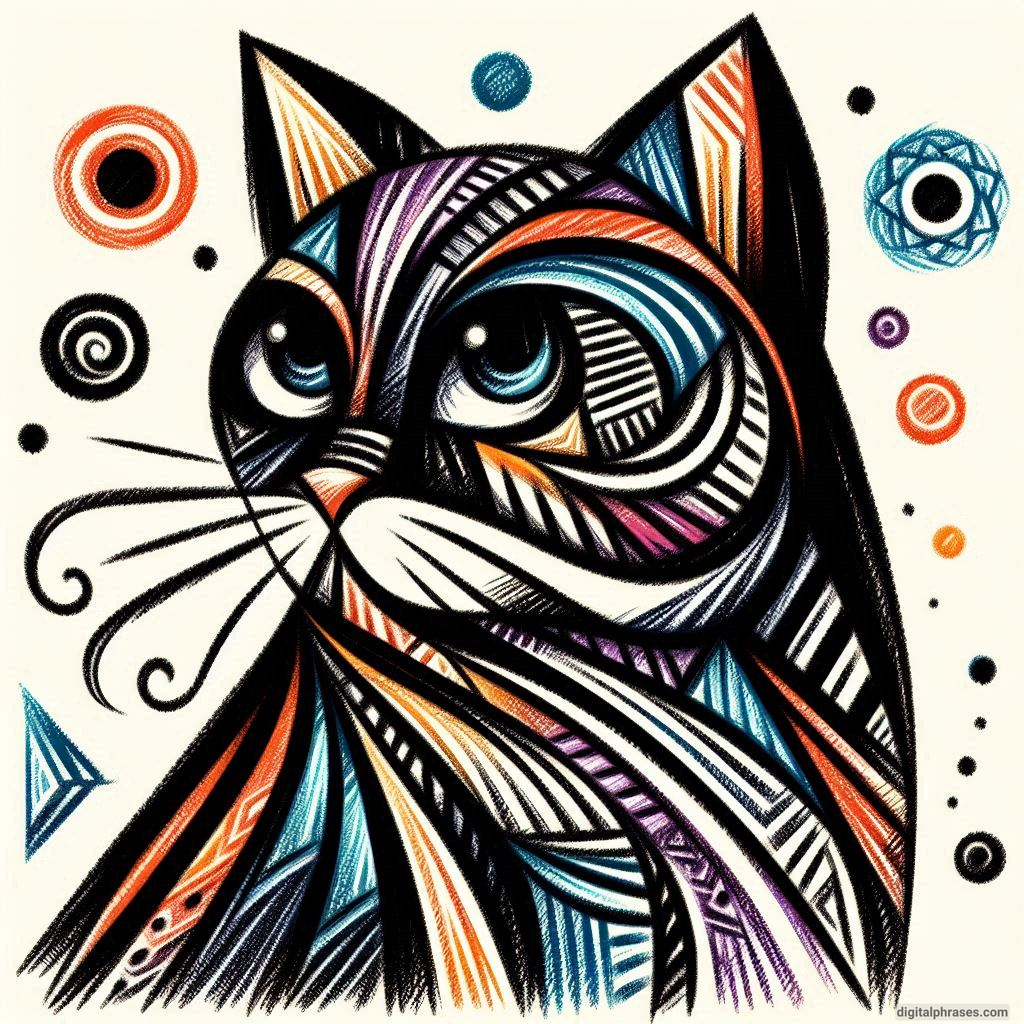
6
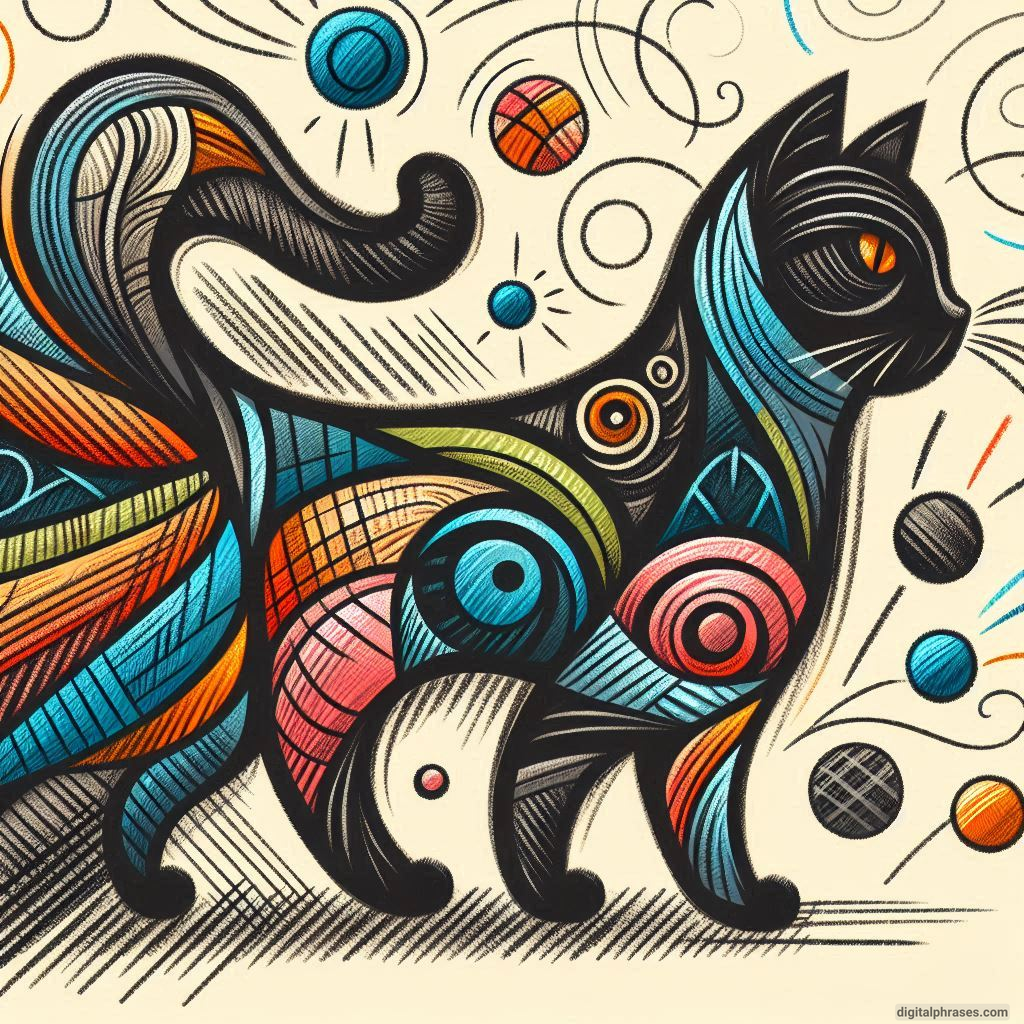
Cat with Accessories
1
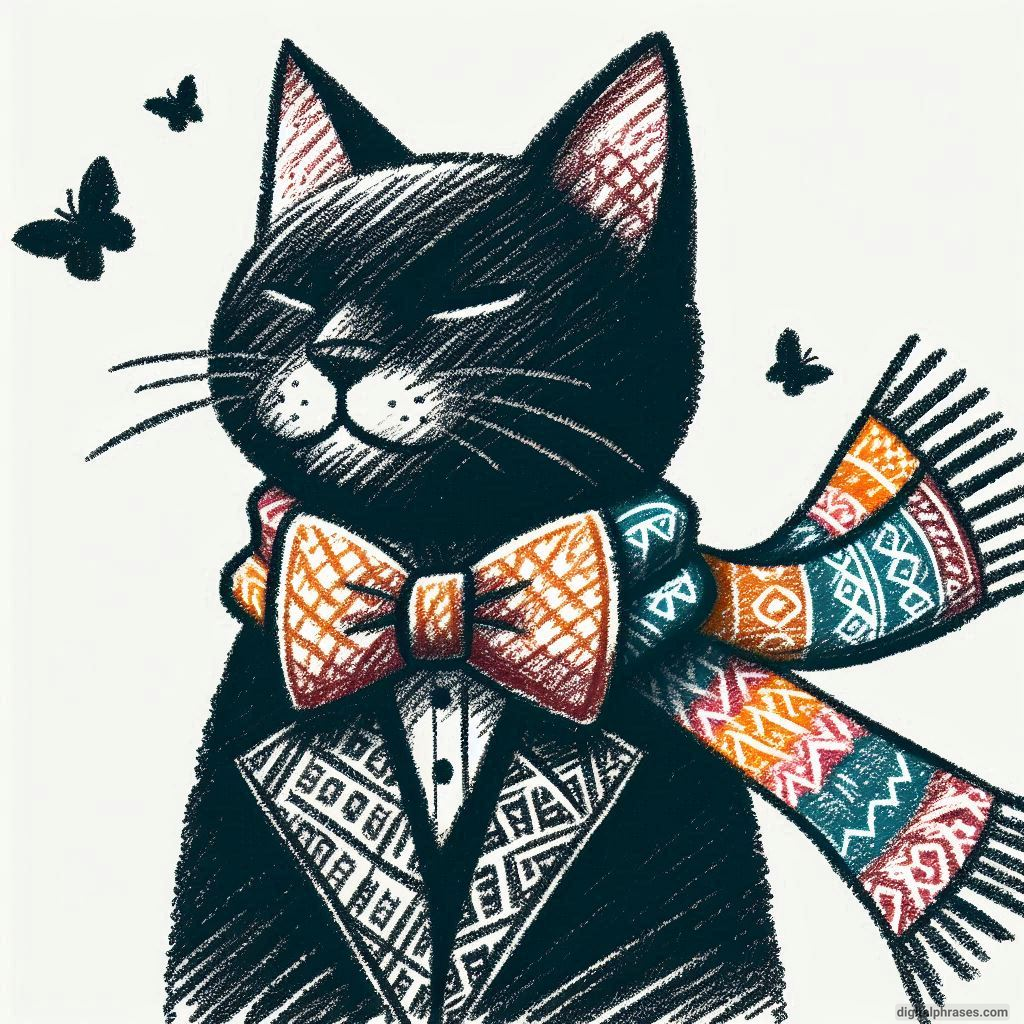
2
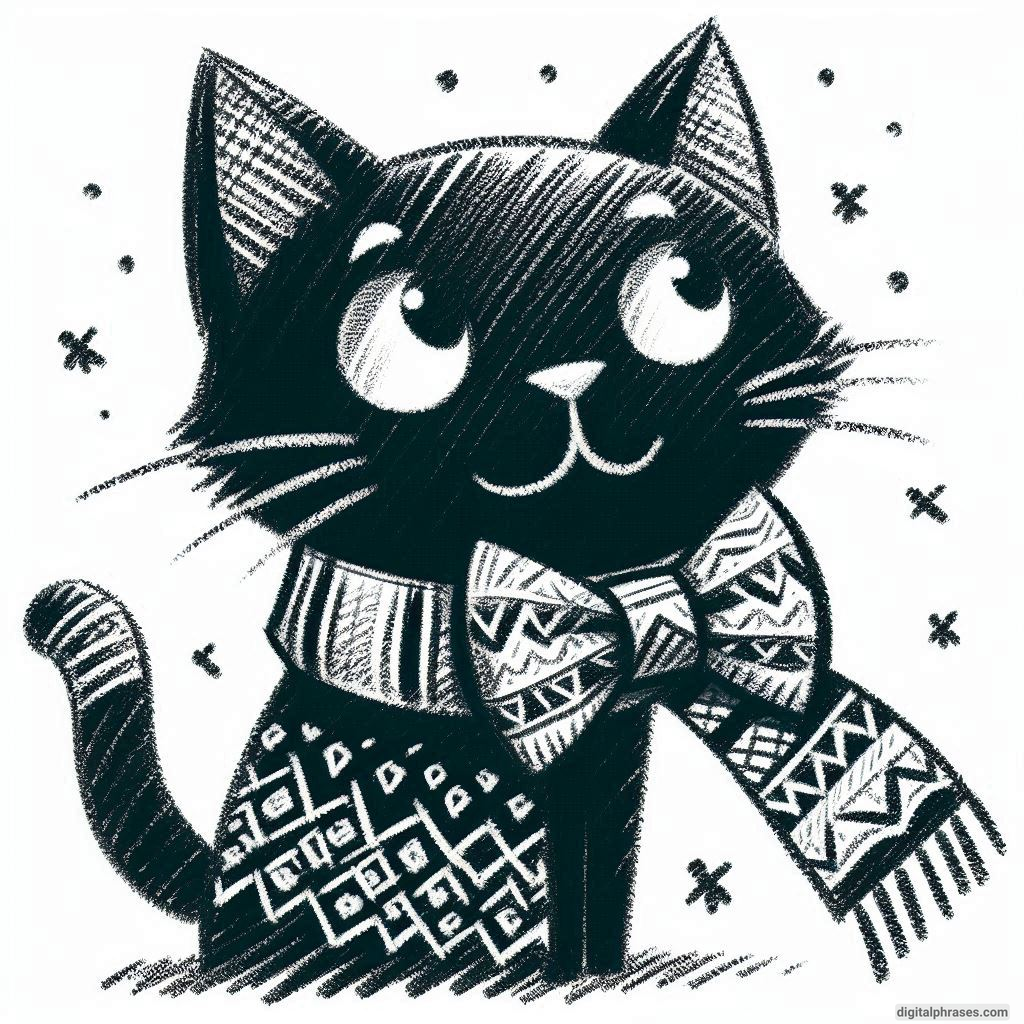
3
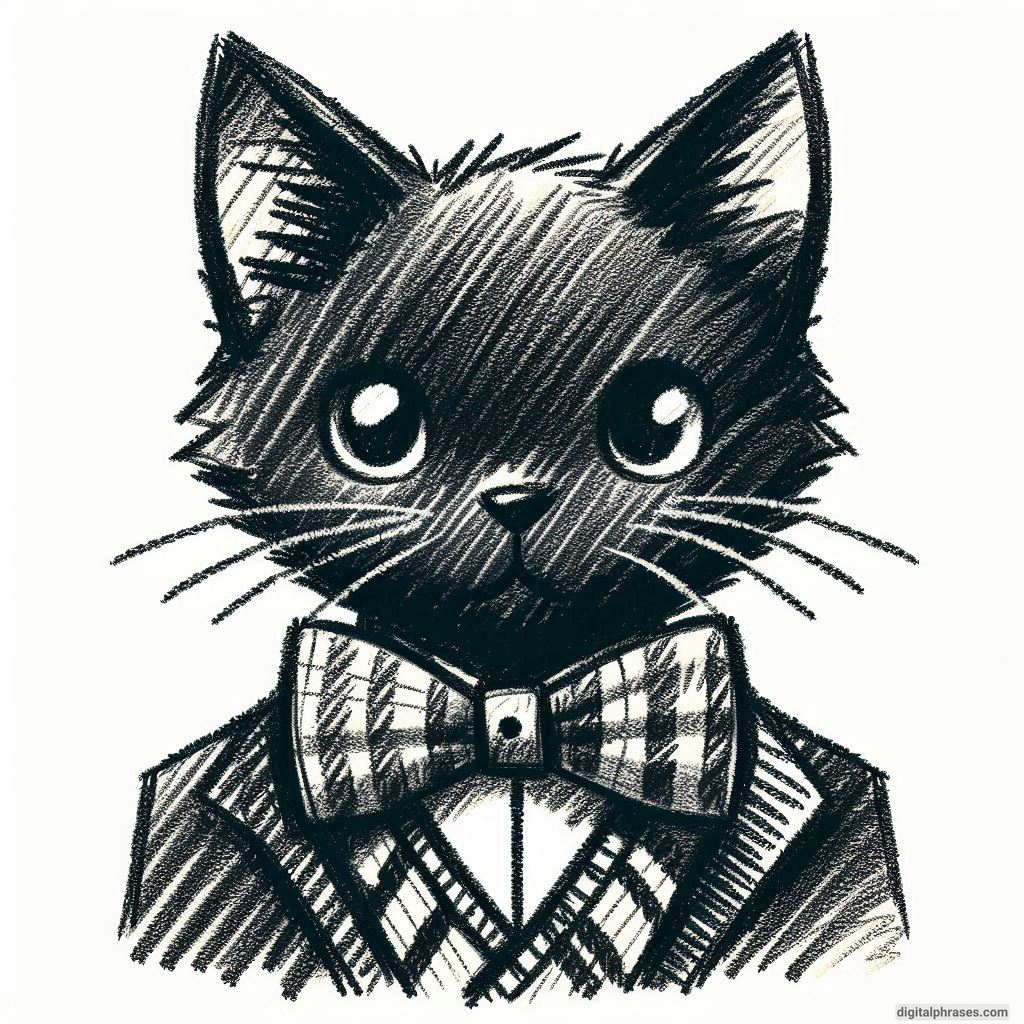
4

5
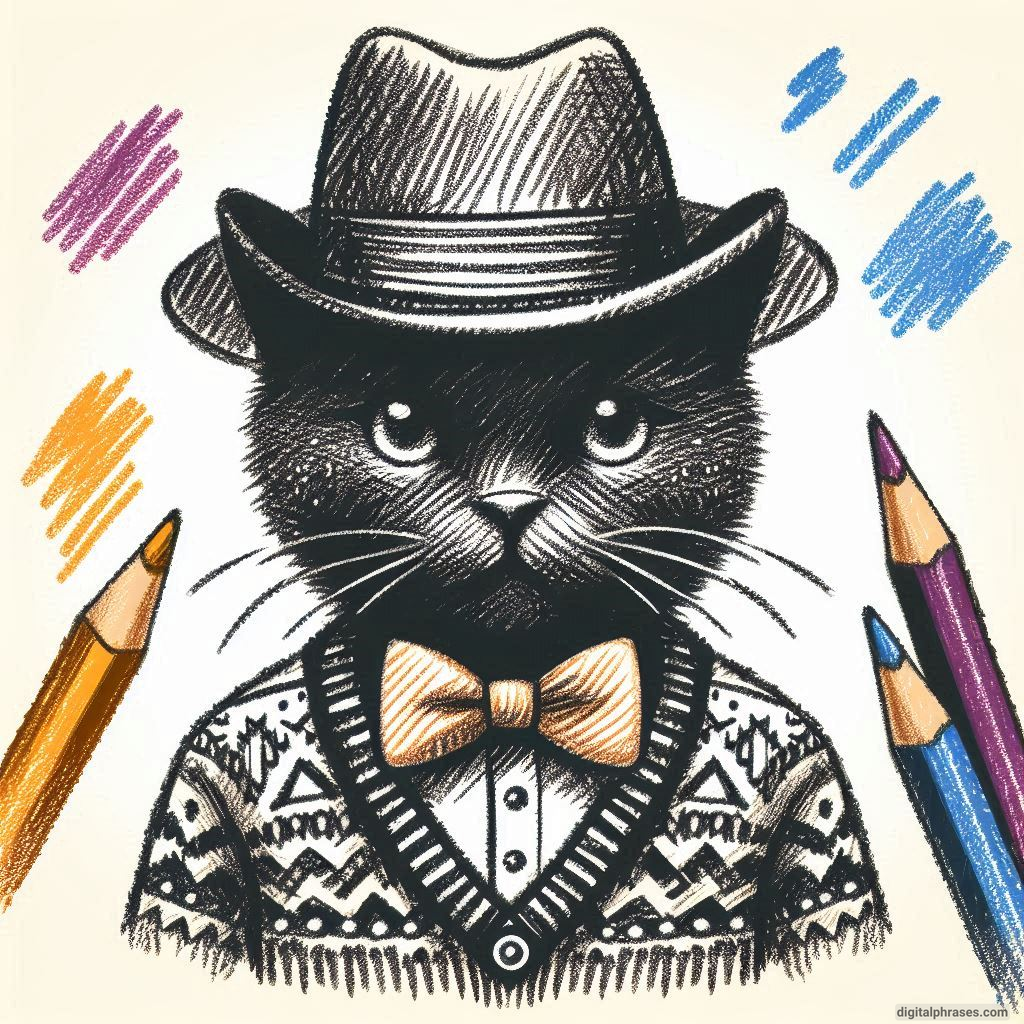
6
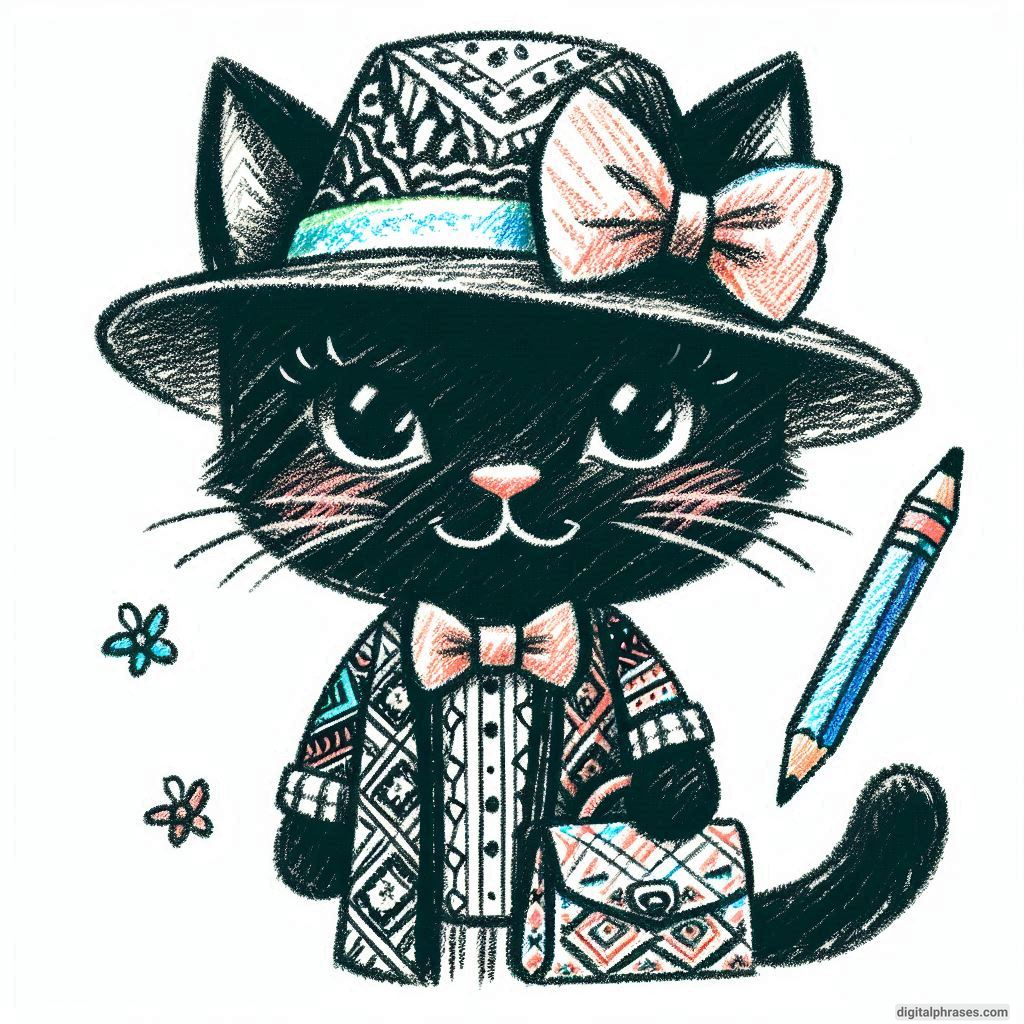
Cats in a Fantasy Setting
1

2

3
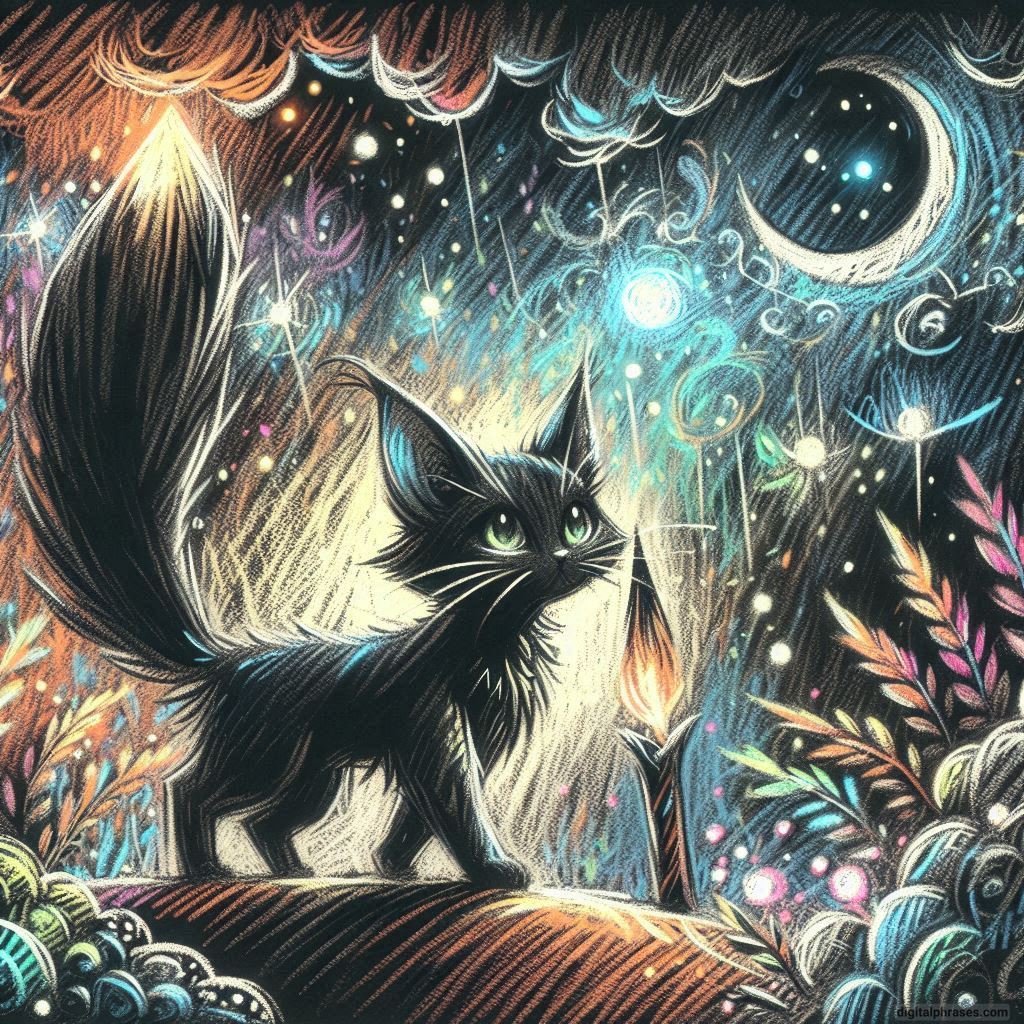
4
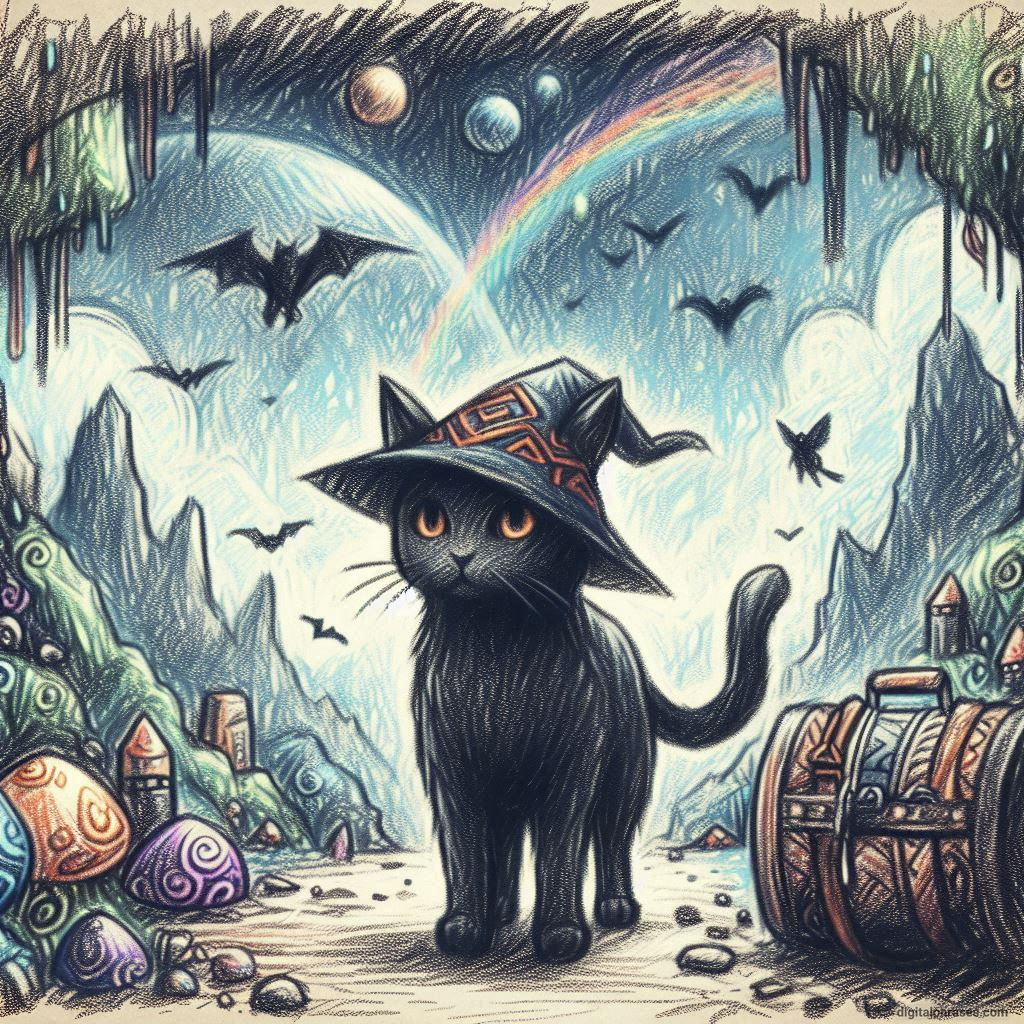
5

6
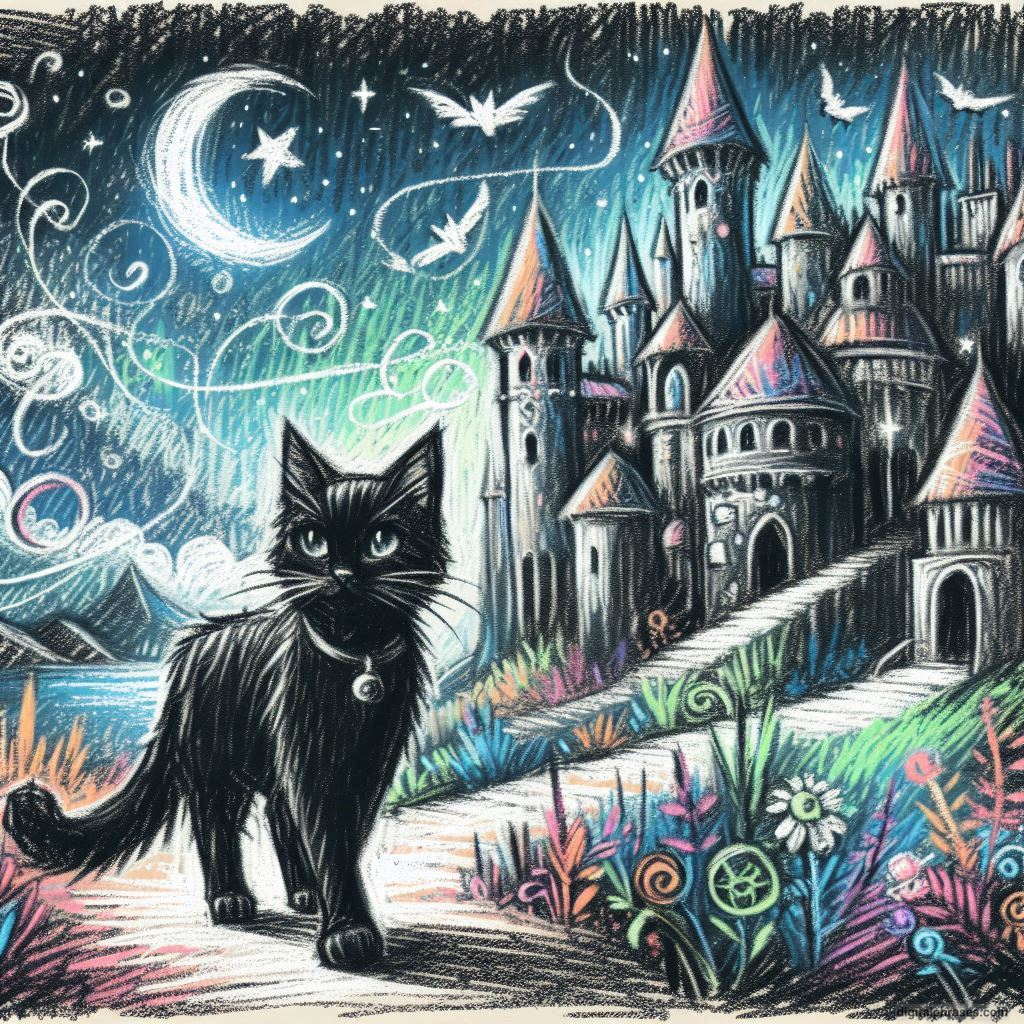
Black Cat Portraits
1
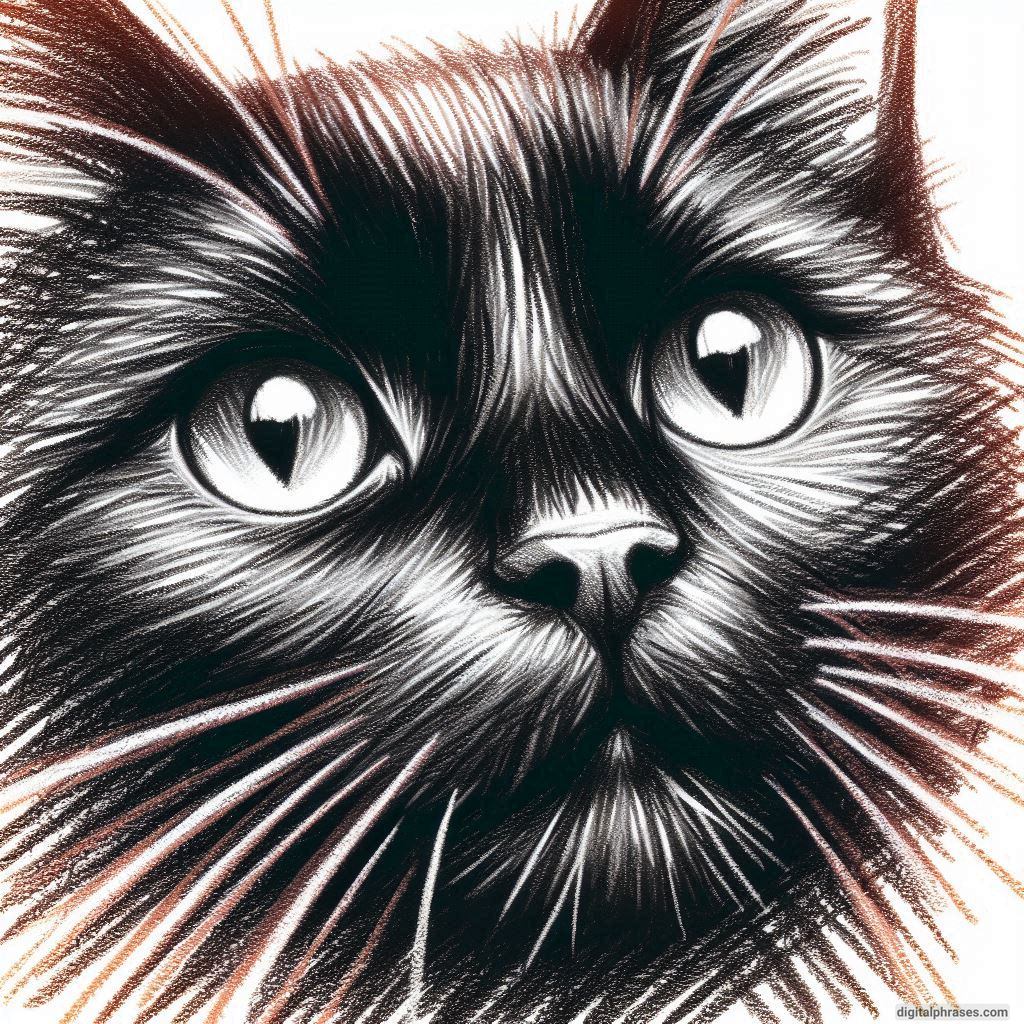
2
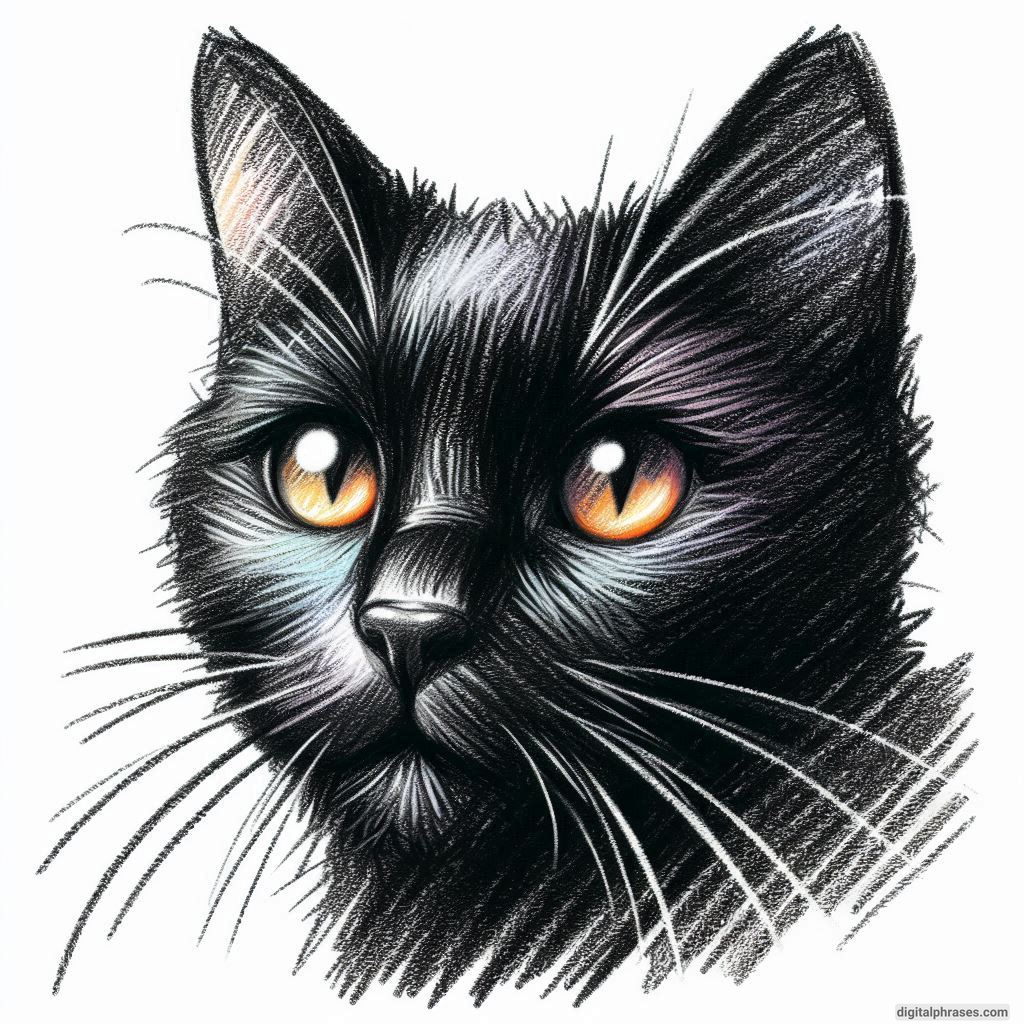
3
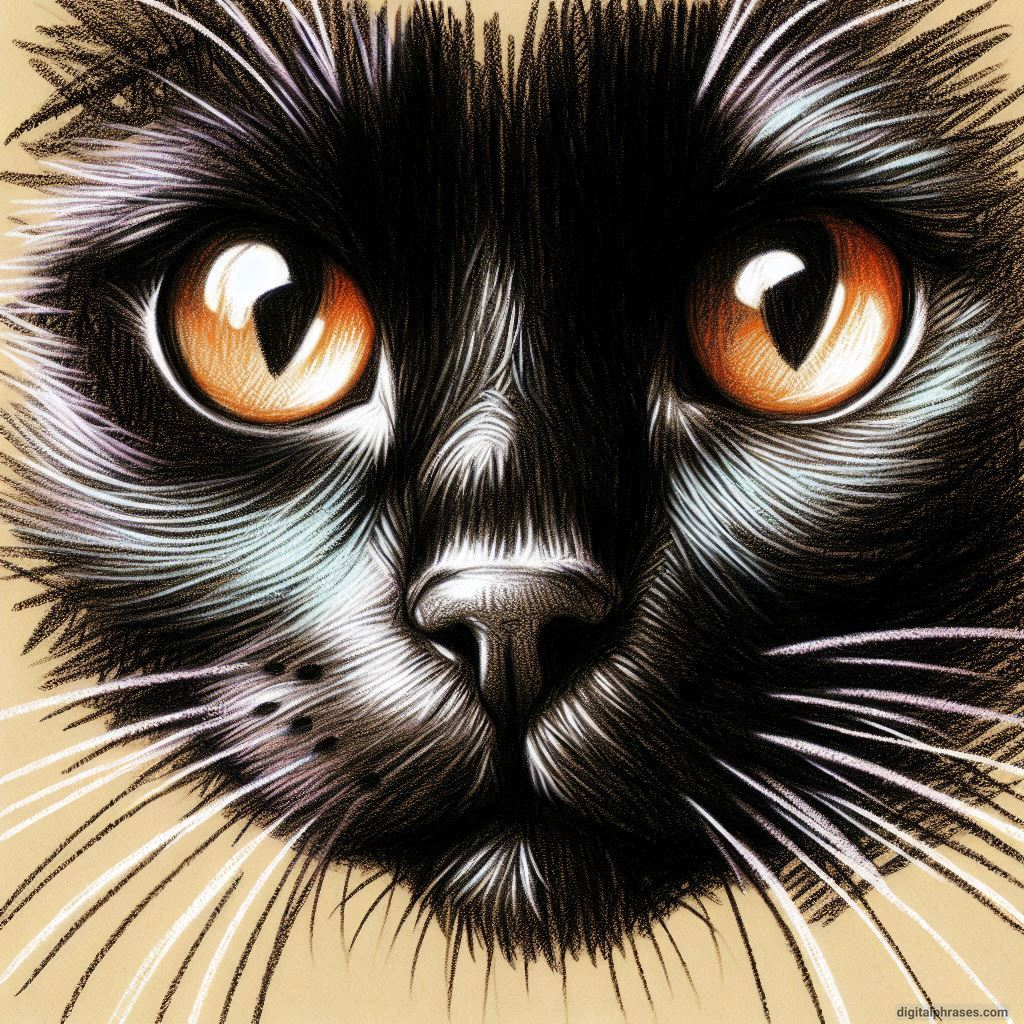
4
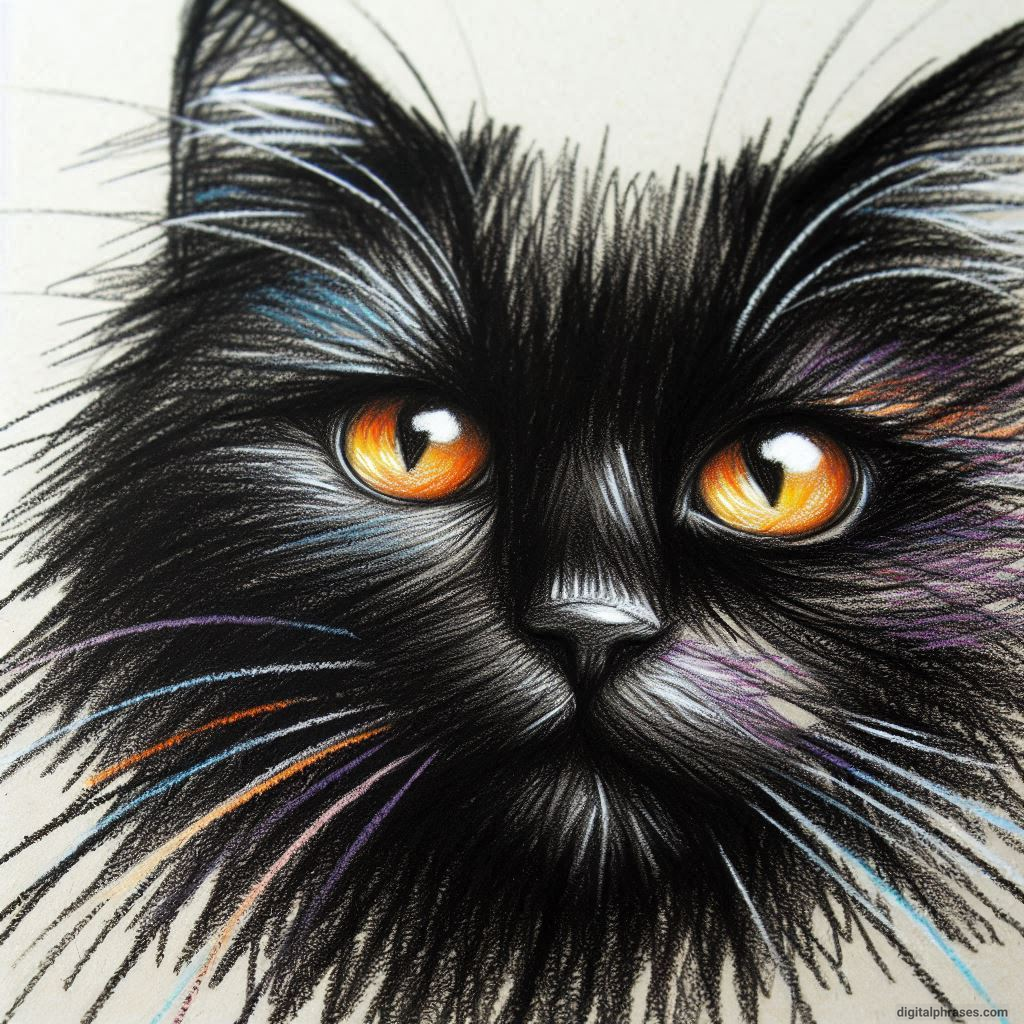
5

6

Cartoon Style Black Cats
1
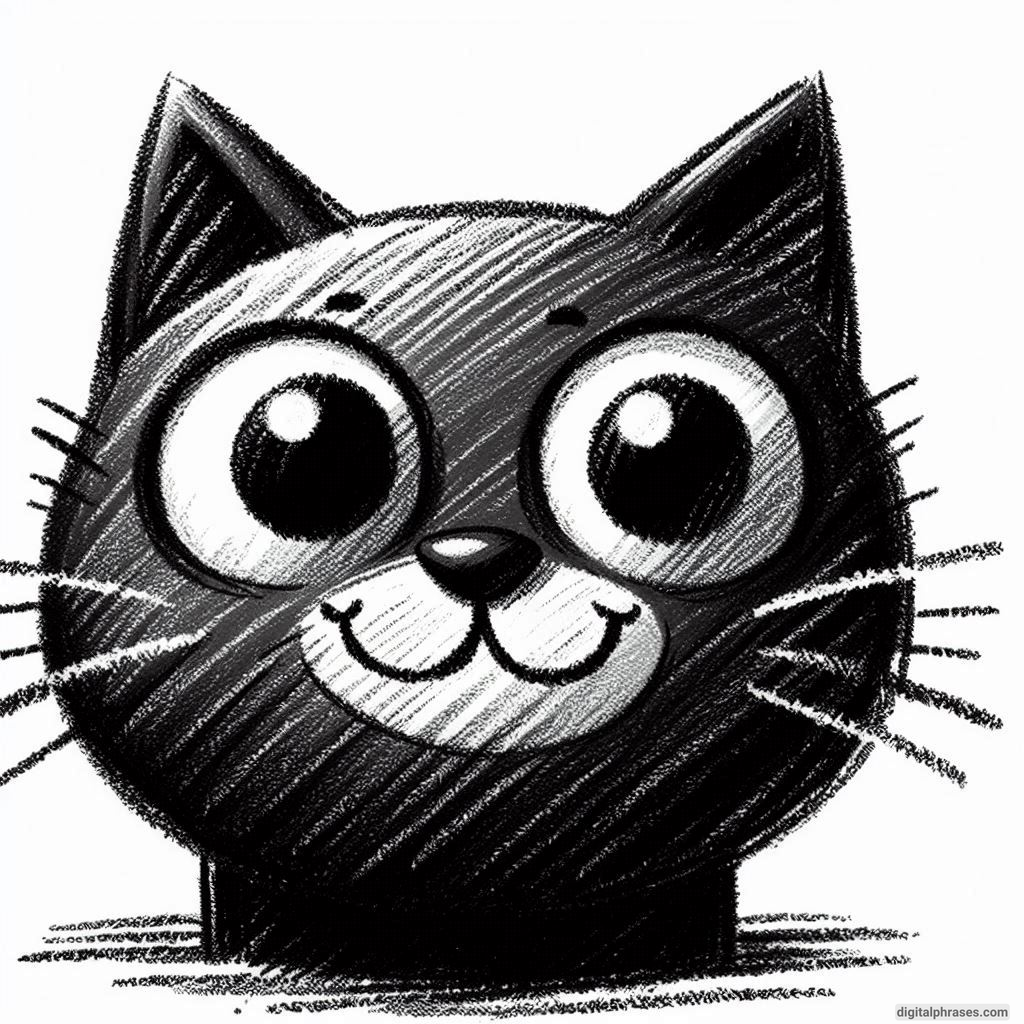
2
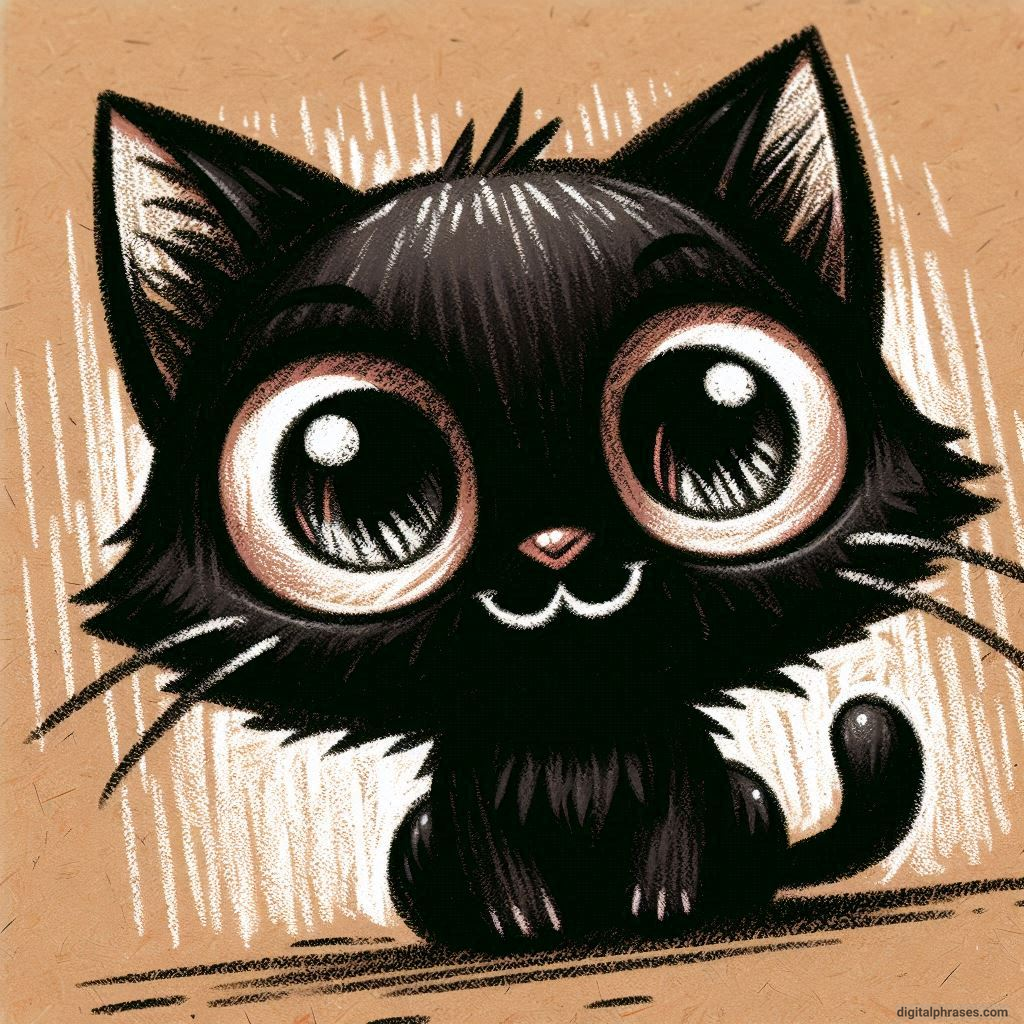
3
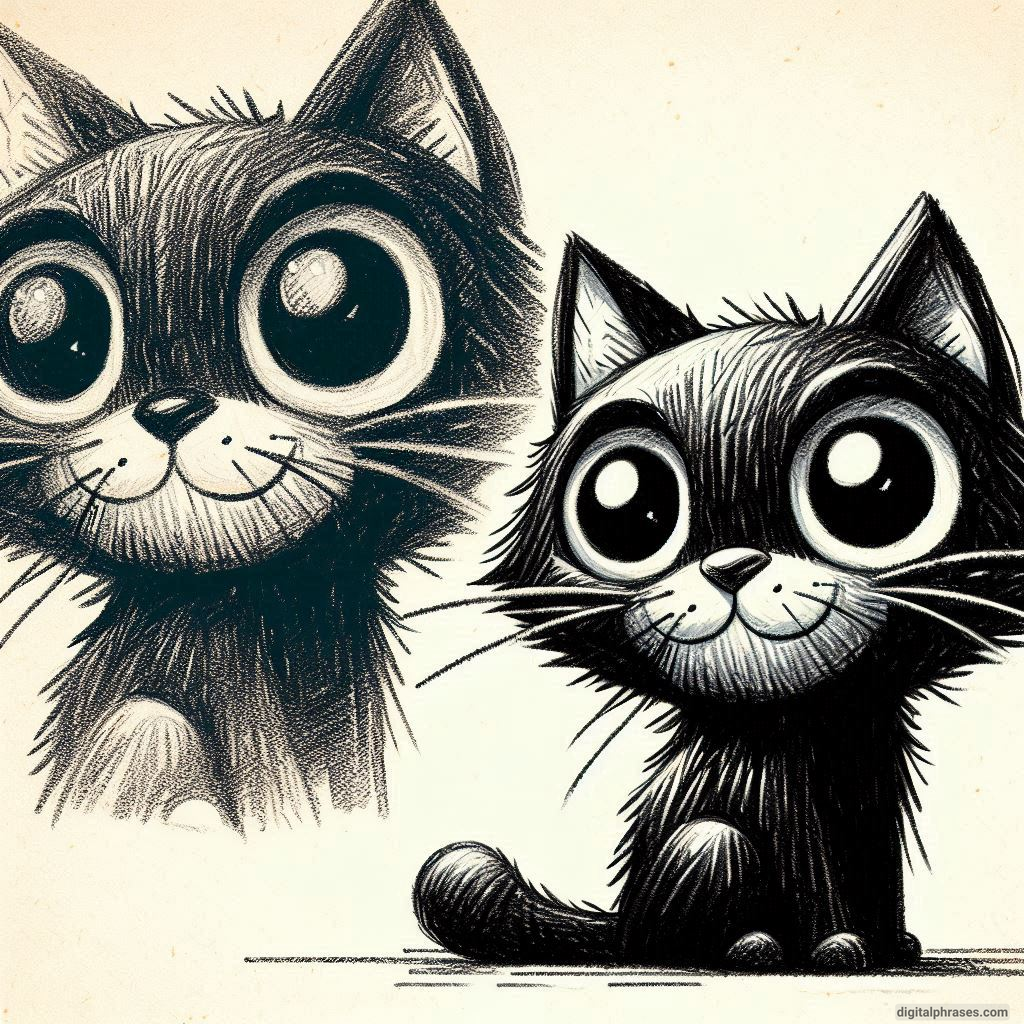
4

5

6

Things To Keep In Mind While Drawing a Black Cat + How To Draw It?
Here are some important things to keep in mind while drawing a black cat:
1. Understanding Anatomy and Proportions
Before diving into the specifics of fur texture and color, it’s crucial to have a solid understanding of cat anatomy and proportions. Black cats, like all cats, have unique body structures that should be accurately represented to make your drawing realistic and appealing.
Basic Anatomy of a Cat:
- Head: Cats have a relatively small, rounded head with prominent cheekbones. Their eyes are large and set wide apart, which can be a focal point of your drawing.
- Body: A cat’s body is typically long and slender with a flexible spine. This flexibility allows cats to move with grace and agility, which should be reflected in your drawing.
- Legs and Paws: Cats have long legs compared to their body size, ending in soft paws. Paying attention to the curvature and positioning of the legs can enhance the dynamism of your drawing.
- Tail: The tail is often used for balance and expression. It can be depicted in various positions to convey different emotions or actions.
Proportional Guidelines:
- Head to Body Ratio: Generally, a cat’s body is about three times the length of its head. The head should not be too large or too small compared to the body.
- Eyes and Ears: The eyes should be positioned halfway down the head, with the ears slightly above and angled outward.
- Limbs and Tail: The length of the legs should match the body’s proportions, and the tail should be about the same length as the body, tapering to a point.
Using references, such as photographs or live observations, can help you capture these proportions accurately. Sketching preliminary outlines and shapes can also aid in maintaining correct anatomy and balance throughout the drawing process.
2. Capturing Texture and Fur
One of the main challenges of drawing a black cat is capturing the texture and appearance of its fur. Black fur is not just a solid mass; it reflects light and reveals subtle variations in color and texture.
Techniques for Fur Texture:
- Layering: Use layering techniques to build depth and texture. Start with lighter shades and gradually add darker tones. This helps create the illusion of fur layers.
- Directional Strokes: Follow the natural direction of the cat’s fur with your pencil or brush strokes. Short, quick strokes can mimic the appearance of fur, while longer strokes can indicate flow and movement.
- Contrast and Highlights: Pay attention to areas where light hits the fur. Even in black fur, highlights can be depicted with lighter grays or even hints of blue or purple, adding dimension and realism.
- Soft Blending: Use blending tools or techniques to soften harsh lines and create a smoother transition between different shades. This is especially useful in areas where the fur appears denser and smoother.
Materials and Tools:
- Graphite Pencils: These are ideal for creating detailed, precise lines and can be used for layering and shading.
- Charcoal: Charcoal can produce rich, deep blacks and is excellent for larger, bold areas of shadow.
- Colored Pencils: Using colored pencils can add subtle variations and enhance the vibrancy of highlights and shadows.
- Blending Stumps or Brushes: These tools help achieve smooth transitions and soft edges, enhancing the natural appearance of fur.
3. Mastering Light and Shadow
Understanding how light interacts with a black cat’s fur is essential for creating a realistic and captivating drawing. The way light and shadow fall on the cat’s body can dramatically alter its appearance and mood.
Key Concepts:
- Light Source: Determine the direction and intensity of the light source in your composition. This will guide where you place highlights and shadows.
- Highlights: Identify areas where the light directly hits the fur, such as the top of the head, along the spine, and on the upper parts of the limbs. Highlights should be soft and subtle but provide enough contrast to define the shape.
- Midtones: These areas are neither in direct light nor shadow and form the bulk of the visible fur. Use a medium gray or a slightly lighter shade of black to depict these areas.
- Shadows: Deep shadows add depth and contrast. They can be found under the body, in the folds of limbs, and in areas obscured from the light. Use rich, dark tones to emphasize these shadows.
Techniques for Light and Shadow:
- Gradual Shading: Transition smoothly from light to dark areas using gradual shading techniques. Avoid abrupt changes in value unless the light source is exceptionally stark.
- Reflected Light: Consider secondary light sources or reflections, such as light bouncing off surfaces. This can add complexity and realism to your drawing.
- Contrast Adjustment: Adjust the contrast to ensure the cat stands out against the background and other elements in the composition.
- Value Studies: Practice creating value studies to understand the range of tones needed in your drawing. This helps in planning the distribution of light and shadow effectively.
4. Expressive Features and Emotion
One of the most captivating aspects of drawing a cat is capturing its personality and emotion through facial features and body language. Black cats, often associated with mystery and magic, offer a unique opportunity to explore a range of expressions and moods.
Facial Features:
- Eyes: The eyes are often the focal point of a cat drawing. Pay attention to their shape, size, and position. Capture the reflectiveness and luminosity of the eyes, which can range from golden to green hues.
- Ears: The position and angle of the ears can convey emotions such as curiosity, alertness, or relaxation. Draw the ears with attention to detail, including the inner fur texture.
- Mouth and Whiskers: Subtle changes in the mouth can indicate different emotions, from contentment to alertness. Whiskers add a dynamic element and should be drawn with light, confident strokes.
Body Language:
- Posture: A cat’s posture can convey a wealth of information. A relaxed, curled-up cat suggests calmness, while an arched back or poised stance indicates alertness or playfulness.
- Tail Movement: The tail is expressive and can indicate a cat’s mood. Whether it’s upright, curled, or swishing, the tail adds an important layer of communication.
Techniques for Expression:
- Exaggeration: Slightly exaggerating certain features can enhance expression. Larger eyes or a pronounced arch in the back can emphasize the intended emotion.
- Observation: Spend time observing cats in various states of activity and rest. Capture quick sketches or photographs to study their expressions and movements.
- Focus on Detail: Pay close attention to the details of facial features and body language to convey the cat’s personality accurately.
5. Creating a Balanced Composition
When drawing a black cat, it’s important to consider the overall composition of your artwork. A well-balanced composition enhances the visual impact and ensures that the subject is presented effectively.
Composition Elements:
- Background: Consider the background and how it interacts with the black cat. A contrasting background can make the cat stand out, while a harmonious background can create a cohesive scene.
- Negative Space: Use negative space effectively to balance the composition. The space around the cat can highlight its shape and form.
- Focal Points: Determine the focal points of your drawing. The cat’s eyes or face might be the primary focus, with other elements supporting the composition.
- Rule of Thirds: Use the rule of thirds to position the cat and other elements in the composition. This guideline helps create a balanced and aesthetically pleasing arrangement.
Techniques for Composition:
- Thumbnails: Create small thumbnail sketches to experiment with different compositions. This allows you to explore various arrangements before committing to a final design.
- Balance and Symmetry: Consider the balance and symmetry of your composition. Asymmetrical compositions can be dynamic, while symmetrical ones offer stability and harmony.
- Depth and Perspective: Use perspective and depth to add dimension to your drawing. Foreground and background elements can enhance the sense of space.
- Color and Contrast: Pay attention to color and contrast in the composition. A monochromatic palette can emphasize the black cat, while contrasting colors can create visual interest.
Drawing a black cat requires careful attention to anatomy, texture, light, expression, and composition.
By focusing on these important aspects, you can create a captivating and realistic portrayal of this enigmatic creature. Practice, observation, and experimentation are key to honing your skills and developing your unique artistic style.
Whether you’re aiming for a realistic rendering or a more stylized interpretation, these guidelines will help you capture the essence and beauty of a black cat in your artwork.

